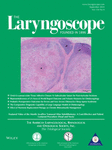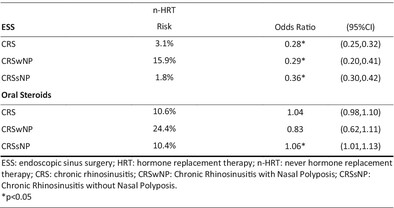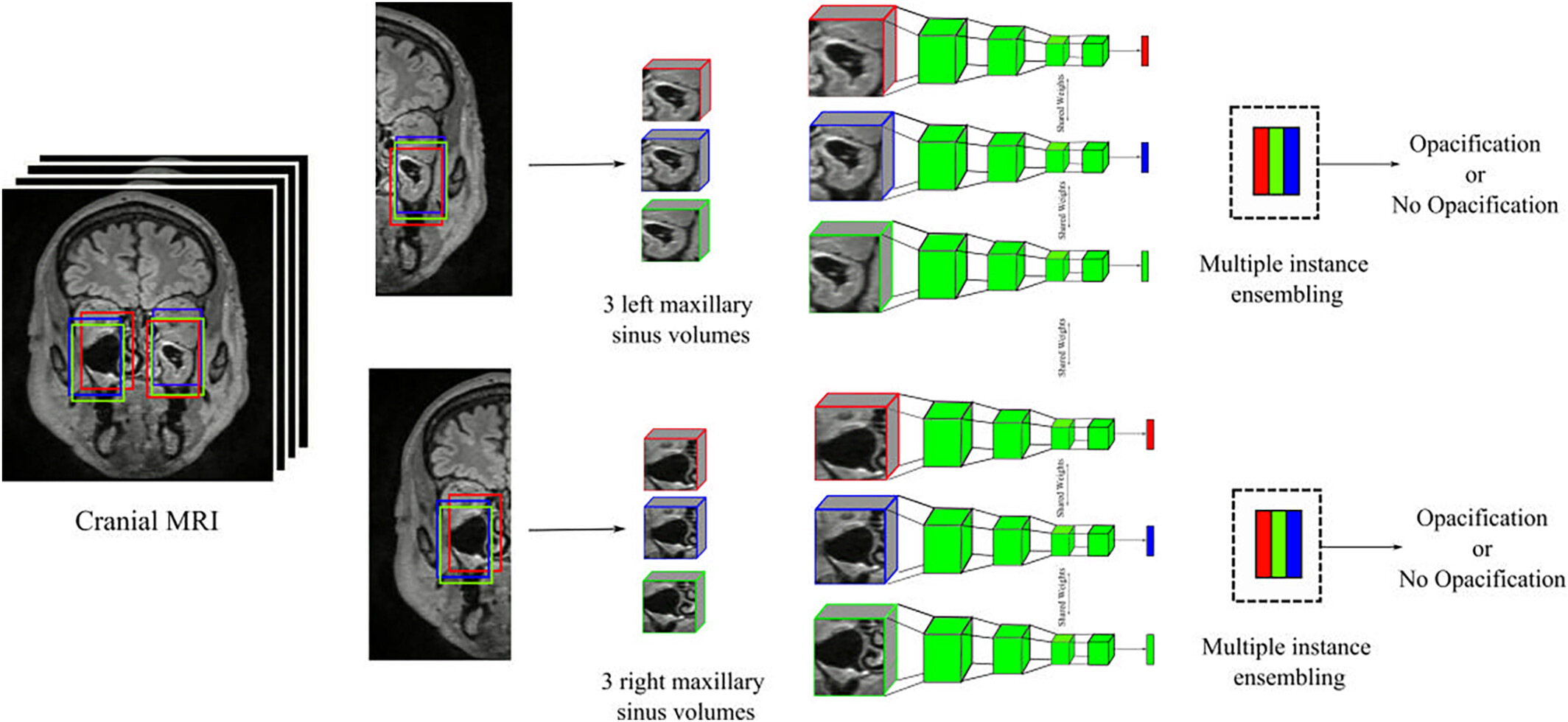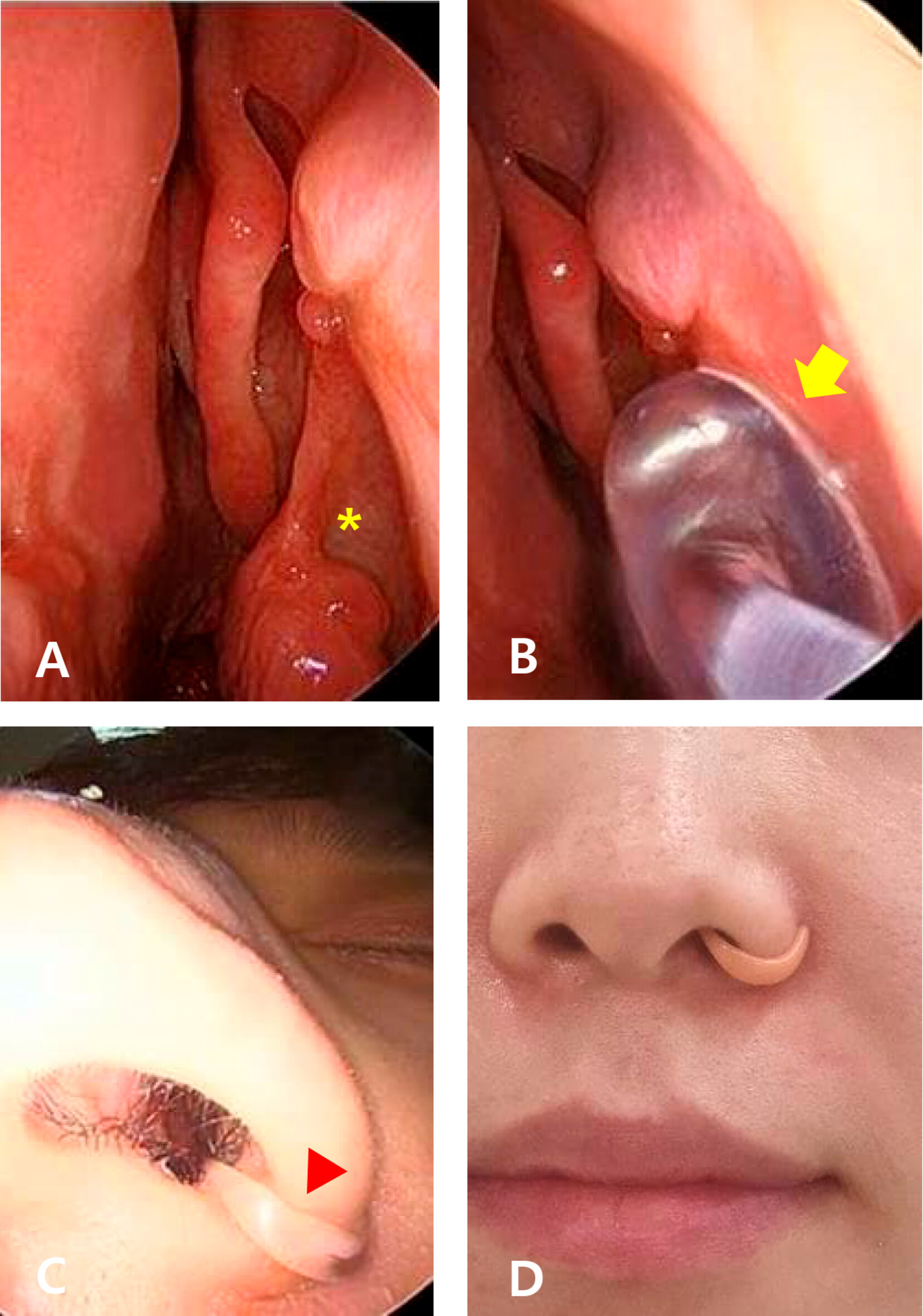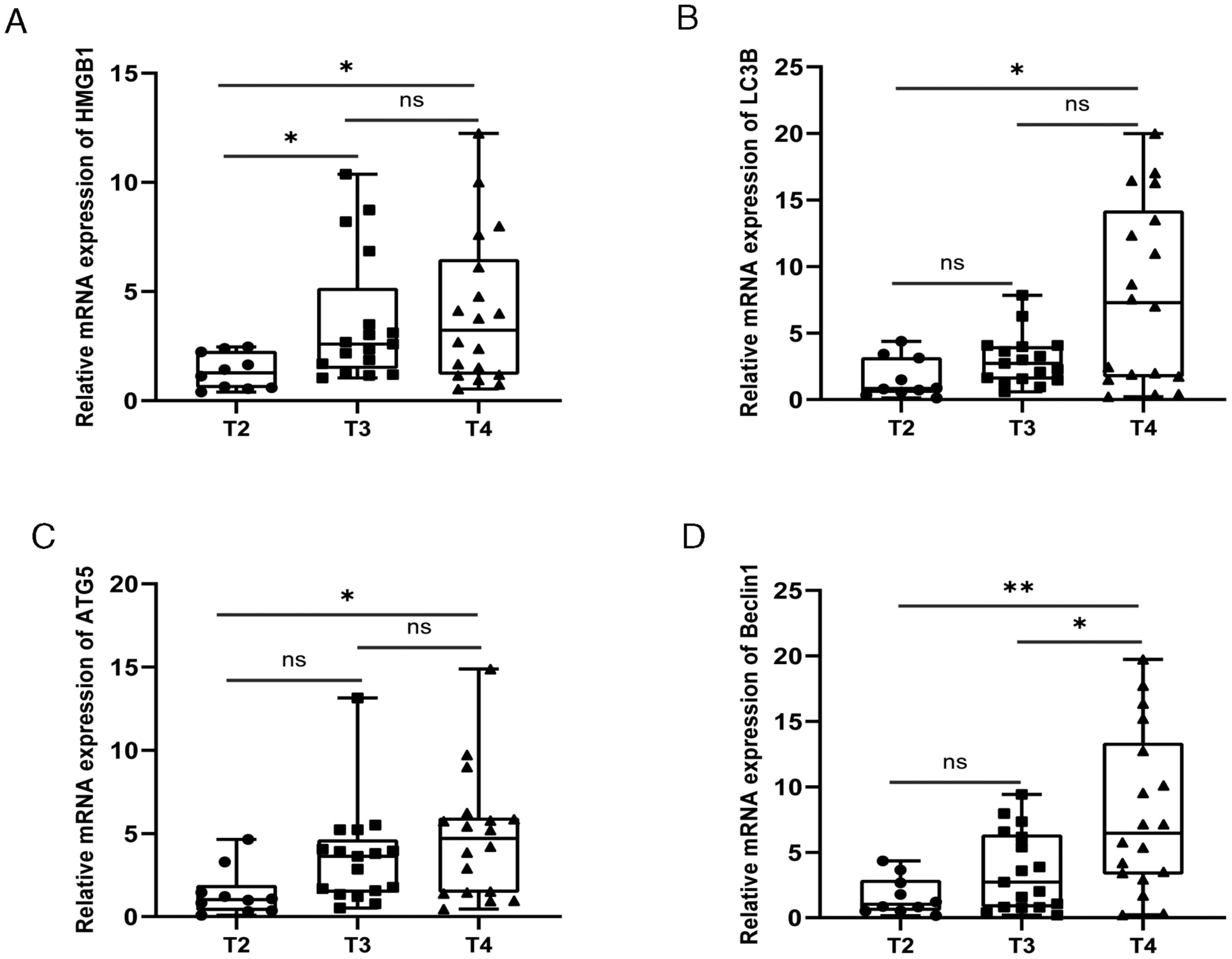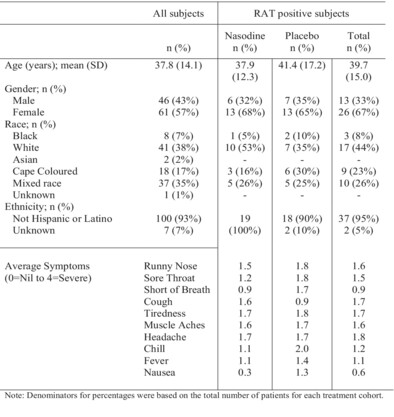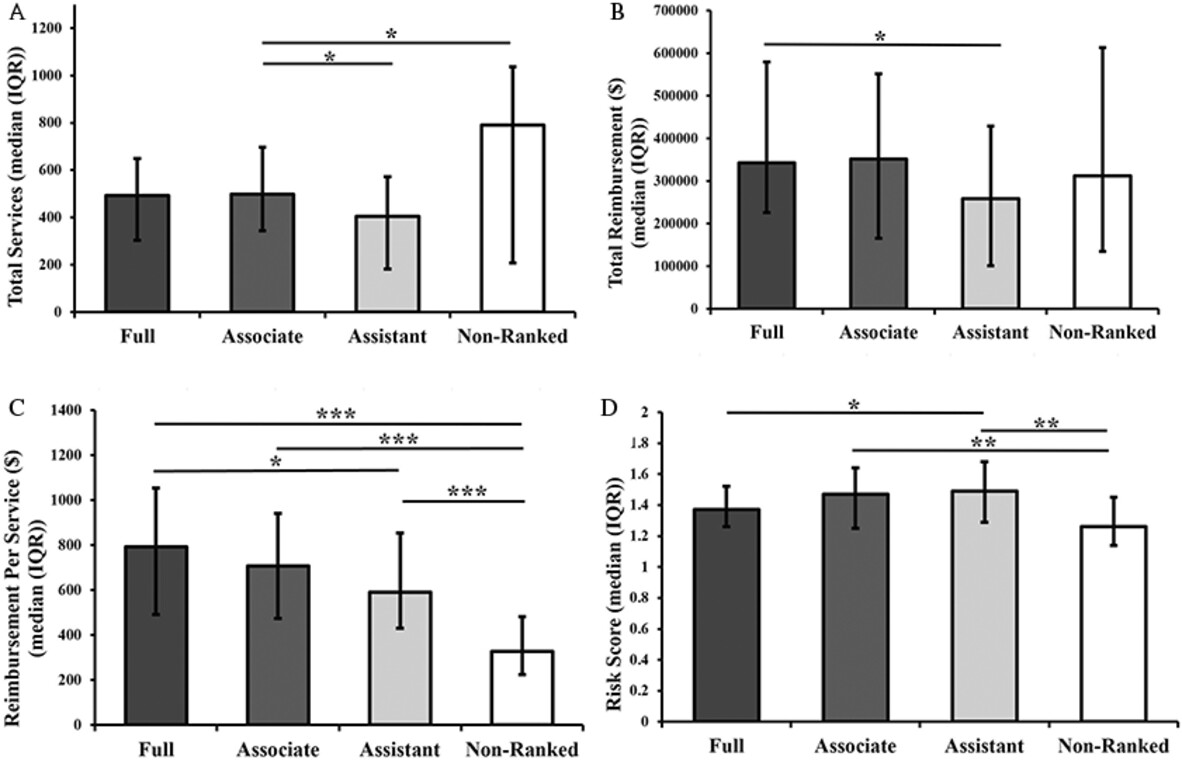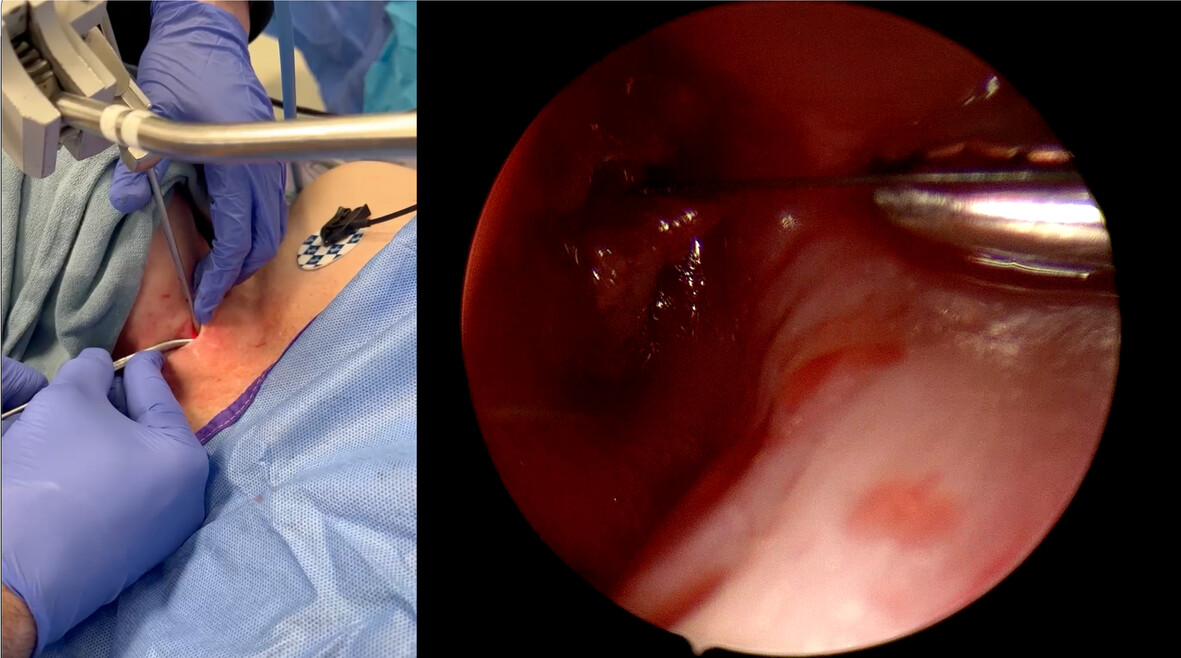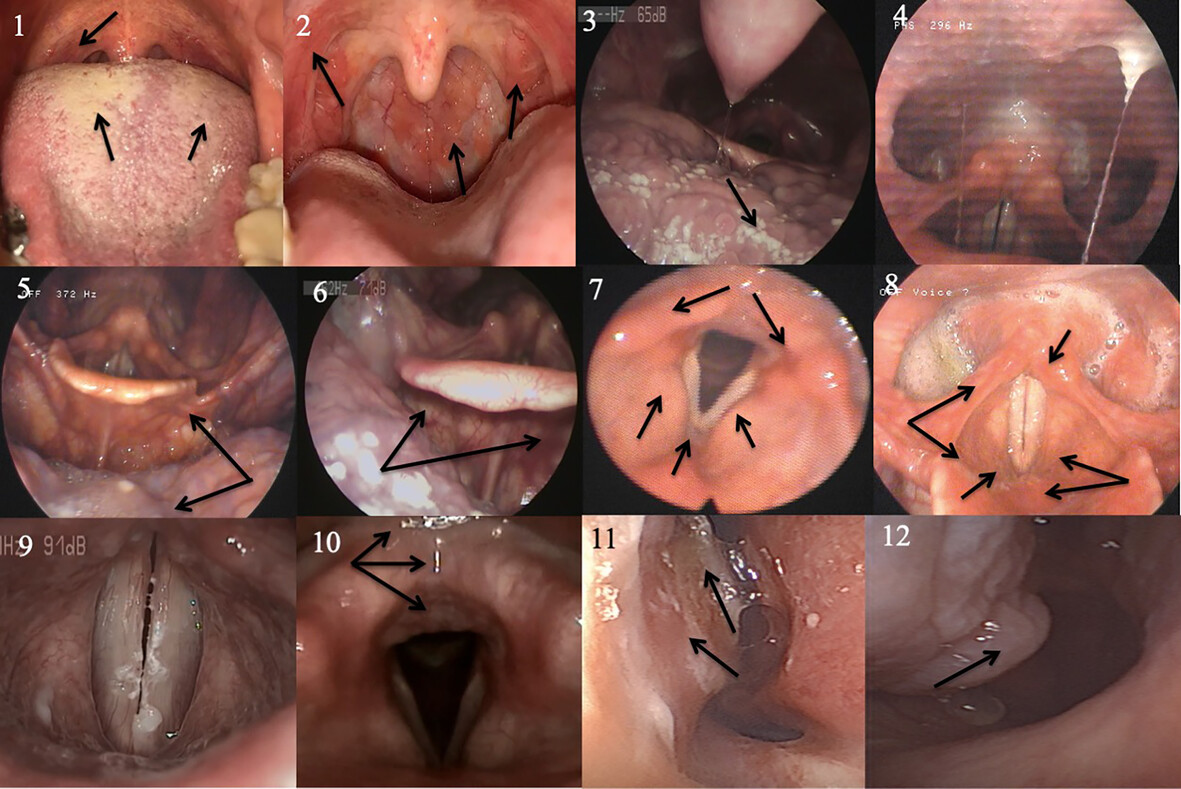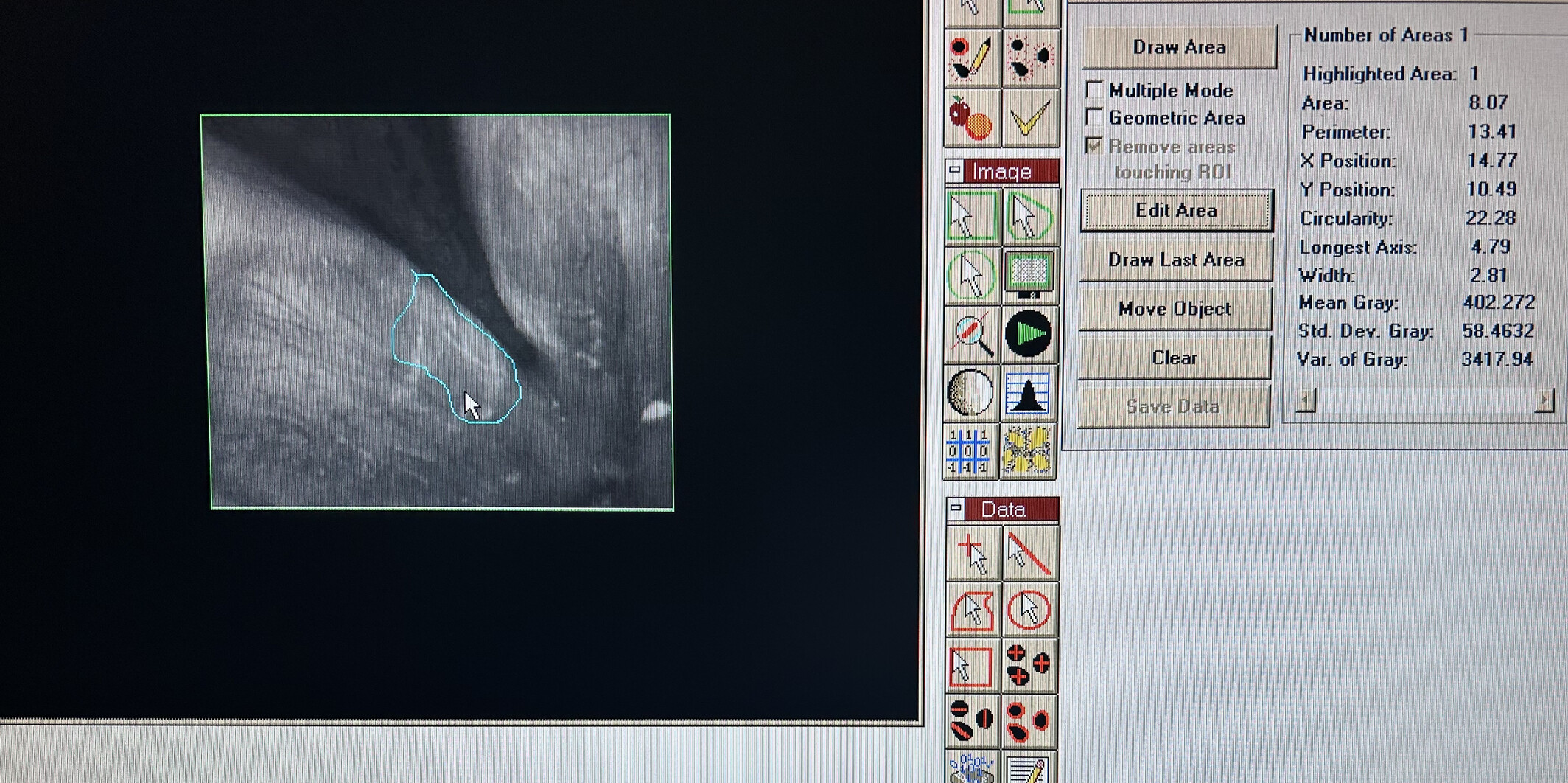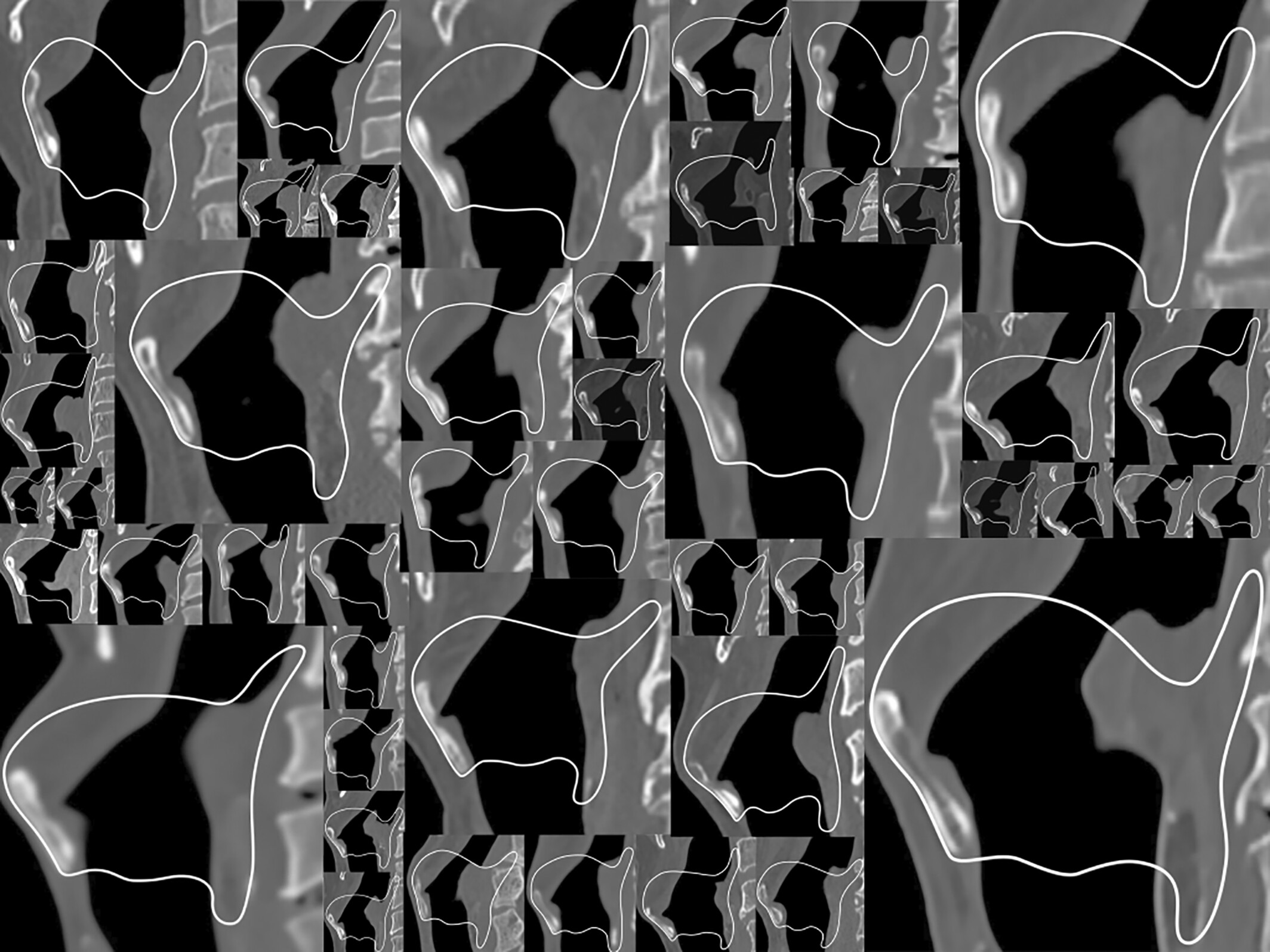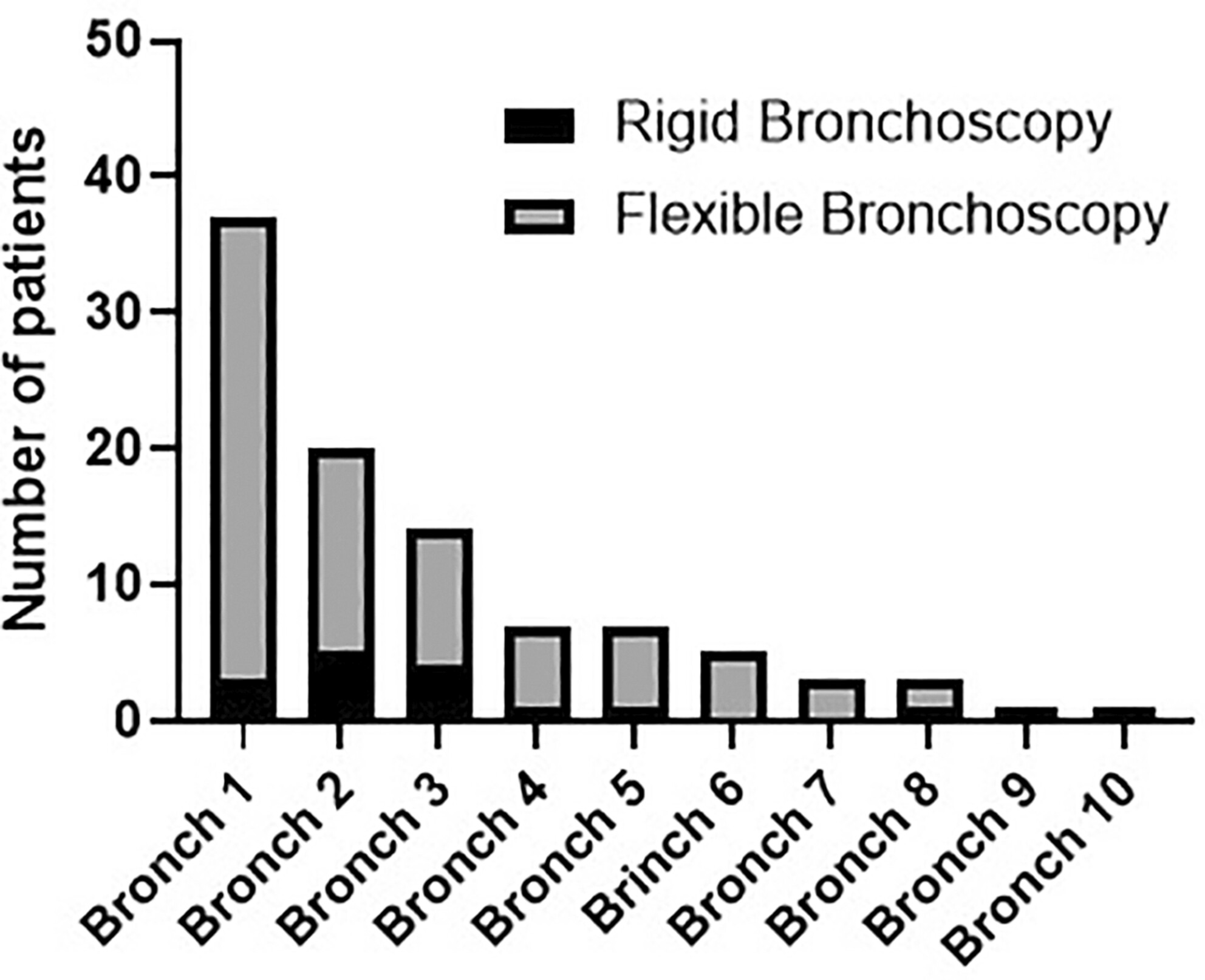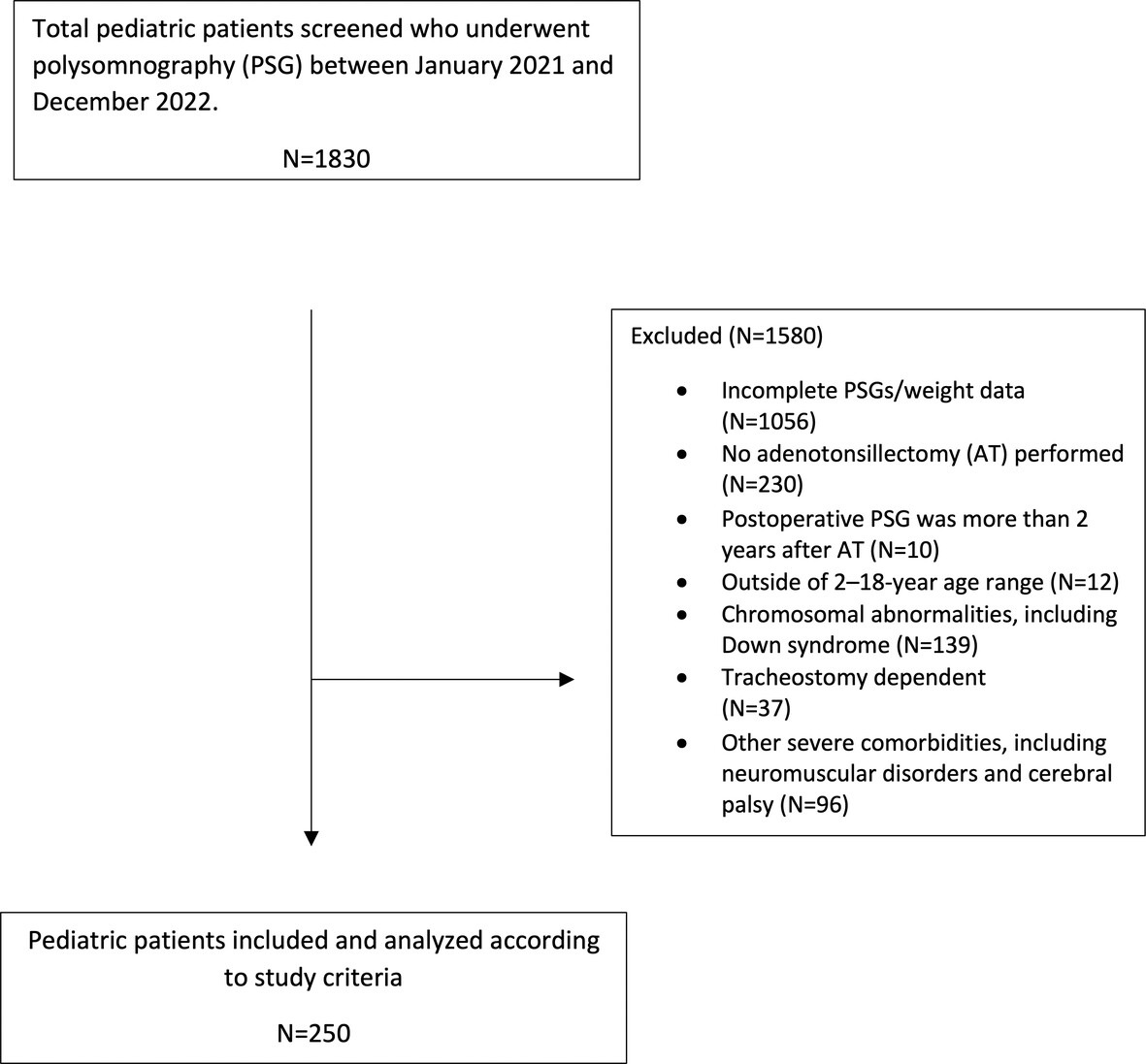Journal list menu
Export Citations
Download PDFs
Issue Information
Triological Society Best Practice
Can Anticoagulation Be Safely Continued in Most Otolaryngologic/Head and Neck Surgery?
- Pages: 3875-3876
- First Published: 11 May 2024
Editorial
Preference Signaling in Otolaryngology—Past, Present, and Future: A Comment From the Society of University Otolaryngologists (SUO), Association of Academic Departments in Otolaryngology (AADO), and the Otolaryngology Program Directors Organization (OPDO)
- Pages: 3877-3878
- First Published: 04 July 2024
Rapid Communication
Association Between Superior Canal Dehiscence Syndrome and Anxiety and Depressive Disorders
- Pages: 3879-3880
- First Published: 25 June 2024
Representativeness of U.S. News & World Report Outcome and Volume Measures for Otolaryngology
- Pages: 3881-3882
- First Published: 08 July 2024
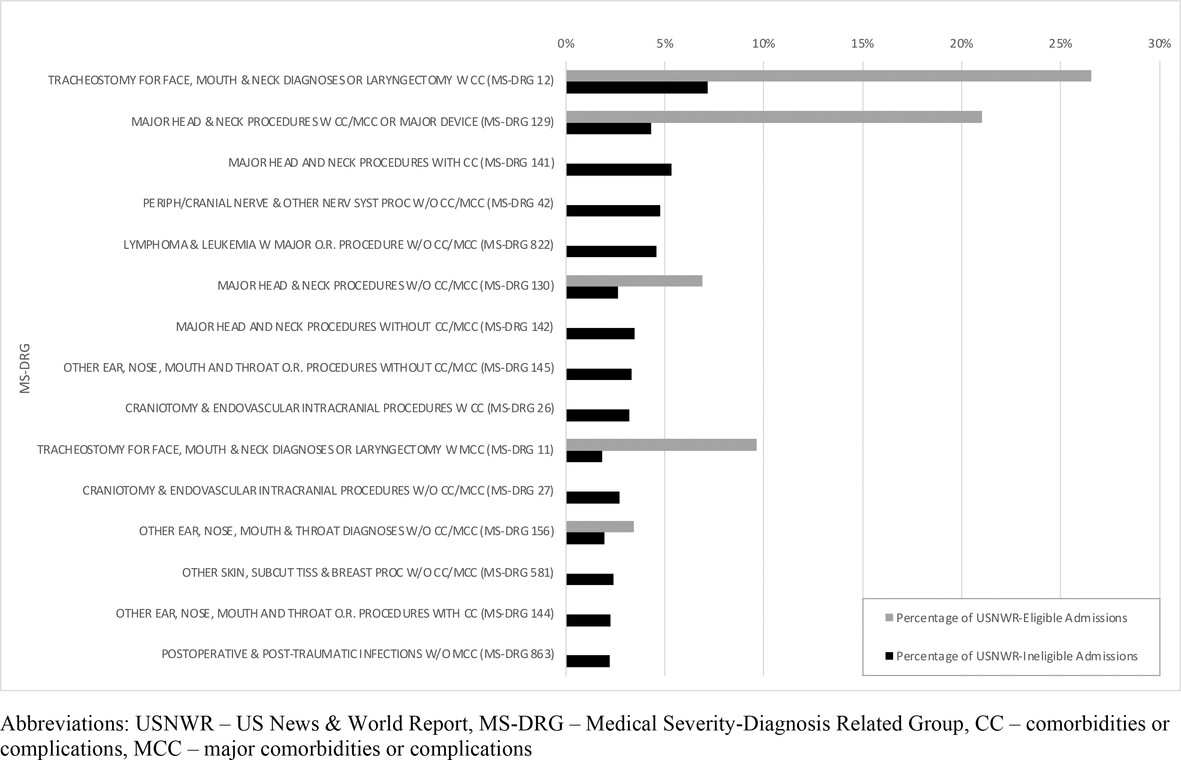
Although outcomes account for 45% of the total ranking score in otolaryngology in the 2023–2024 U.S. News Best Hospitals rankings, little attention has been paid to the representativeness of their outcomes or volume analyses. Through retrospective review of finance data from an academic otolaryngology department, we found the overall 2023–2024 USNWR volume estimate accounted for only 10.0% (n = 2, usw 024/20,334) of all adult admissions and outpatient procedures and did not adequately represent the overall case mix or caseload.
Systematic Review
Prognosis of Bilateral Sudden Sensorineural Hearing Loss: A Systematic Review and Meta-Analysis
- Pages: 3883-3891
- First Published: 20 March 2024
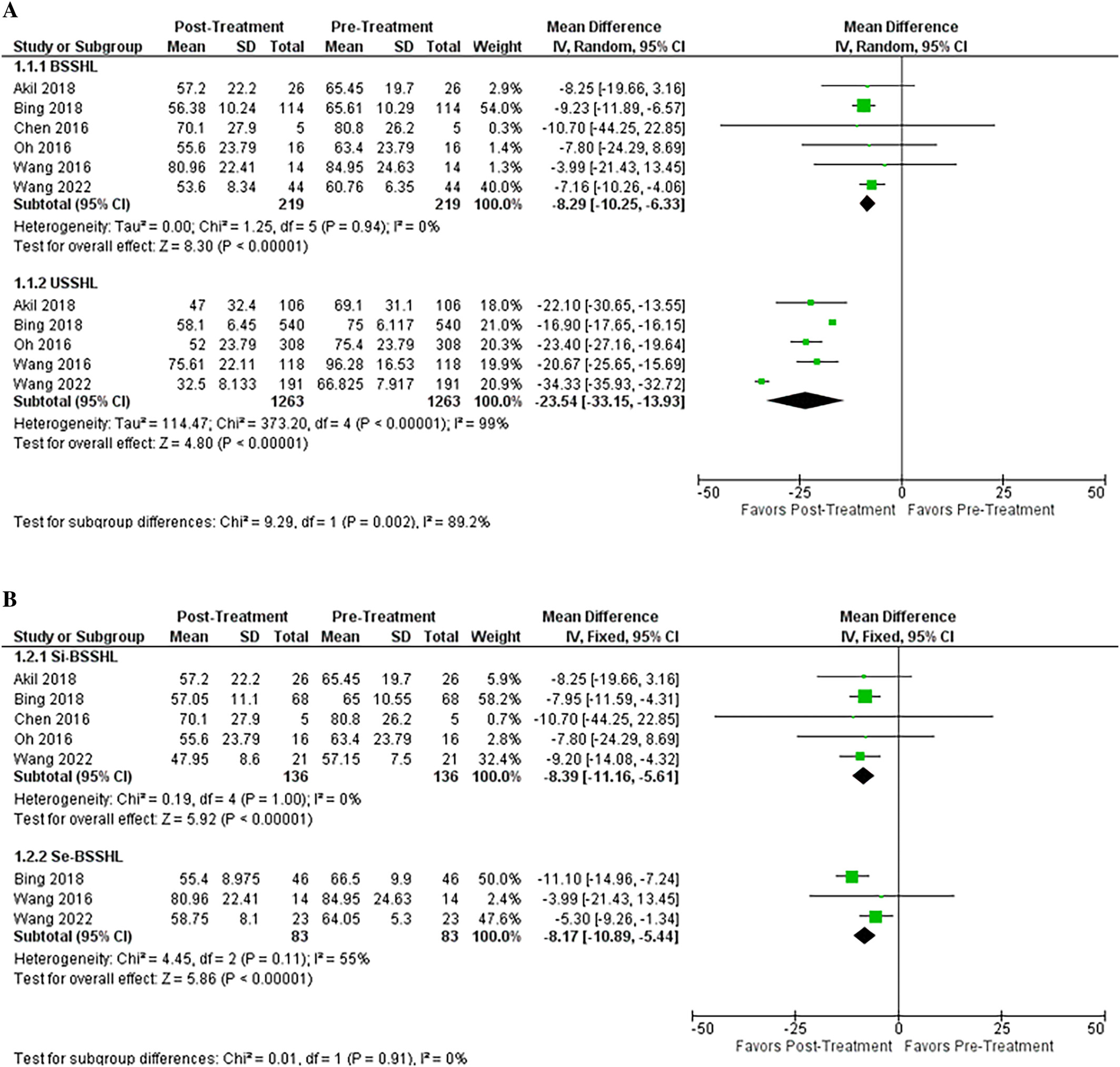
Due to the lack of comprehensive data on bilateral sudden sensorineural hearing loss (BSSHL) and its subtypes, we conducted a systematic review and meta-analysis to better understand the characteristics and prognosis of BSSHL compared to unilateral sudden sensorineural hearing loss (USSHL). We found that BSSHL is considerably rarer and has poorer prognosis in comparison to USSHL. Furthermore, BSSHL, and simultaneous BSSHL in particular, has significantly greater associations with more systemic pathologies compared to USSHL, including hypertension, cardiovascular disease, and autoimmune disease.
Effectiveness of Nasolacrimal SCC Treatments and Promising Role of Chemo-Induction: A Case Report and Systematic Review
- Pages: 3892-3902
- First Published: 23 April 2024
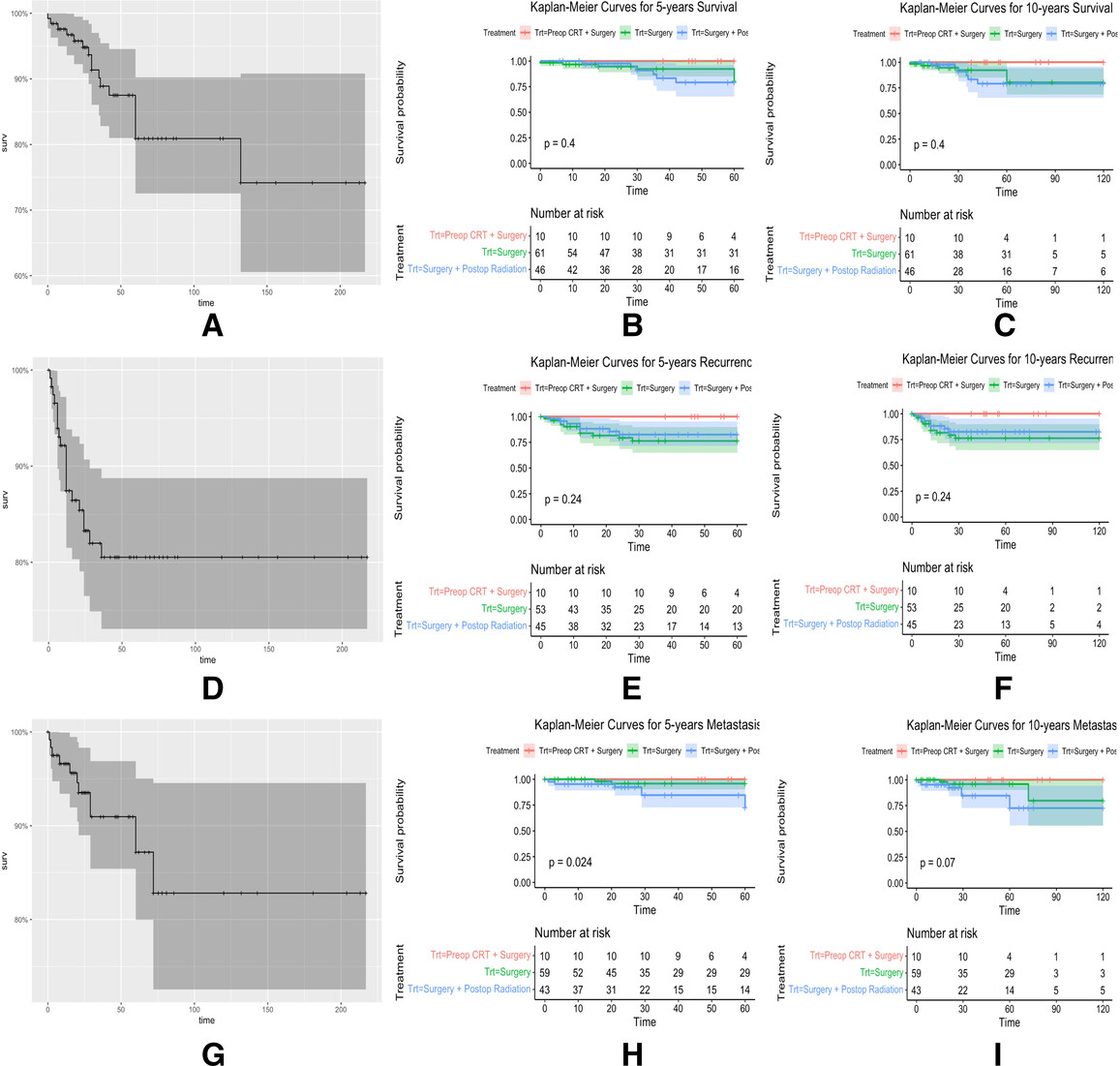
This systematic review underscored the importance of early detection and optimization of treatment as key modifiable factors that would enhance outcomes in Nasolacrimal SCC. It also highlights the potential role to enhance outcomes and minimize the necessity for eye exenteration by utilizing adjuvant therapy.
Scoping Review
Sociodemographic and Healthcare System Barriers to PAP Alternatives for Adult OSA: A Scoping Review
- Pages: 3903-3909
- First Published: 03 April 2024
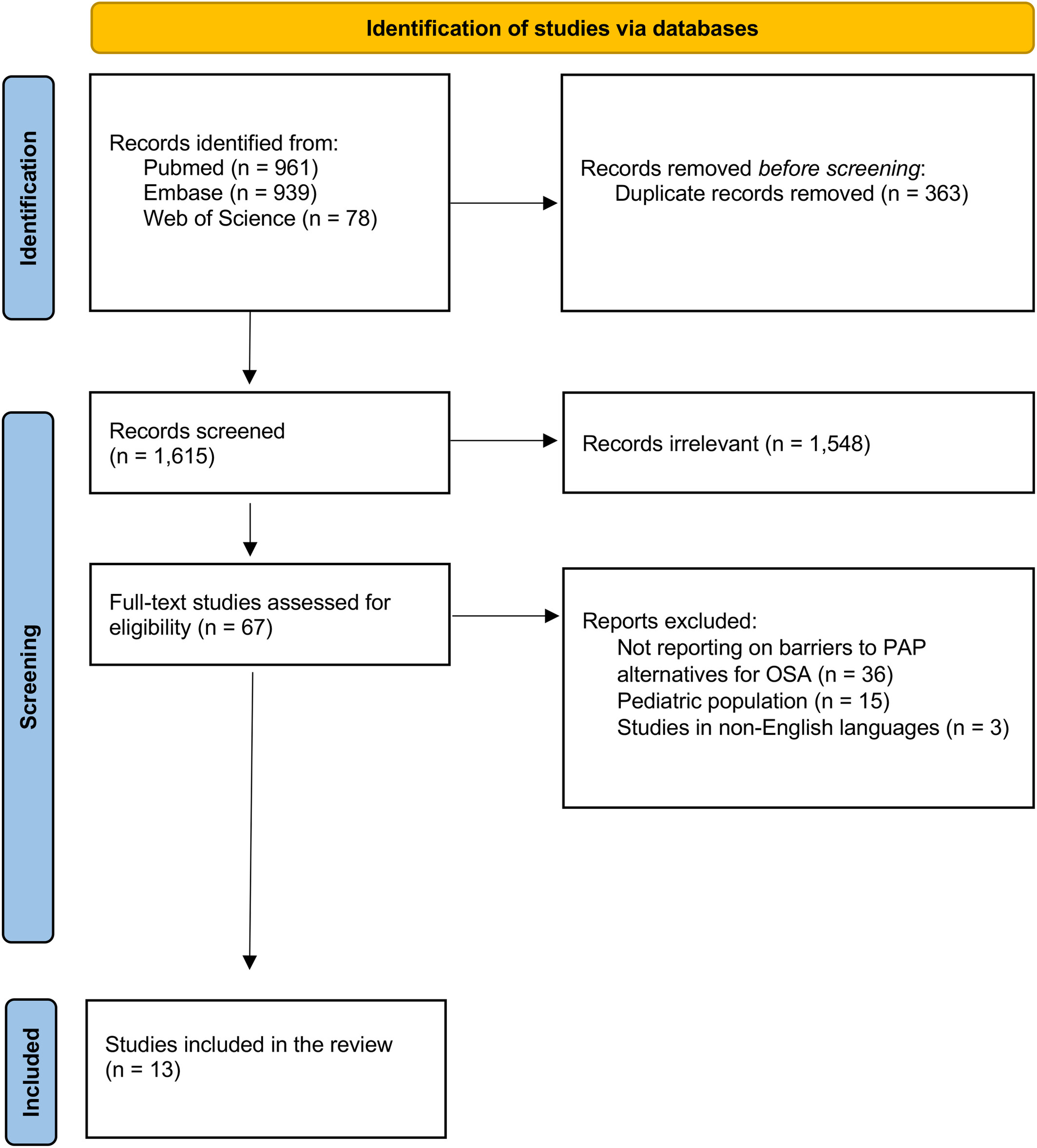
This scoping review explores the sociodemographic and healthcare system barriers to access and utilization of Positive Airway Pressure (PAP)-alternative treatments for obstructive sleep apnea (OSA). Our study reveals a complex interplay of challenges influencing treatment decisions including sociodemographic factors, economic factors, institutional factors, and individual factors, emphasizing the need for a comprehensive approach to address barriers and ensure equitable access to OSA treatments.
Cochlear Implant Outcomes in Patients with Intralabyrinthine Schwannoma: A Scoping Review
- Pages: 3910-3920
- First Published: 30 March 2024
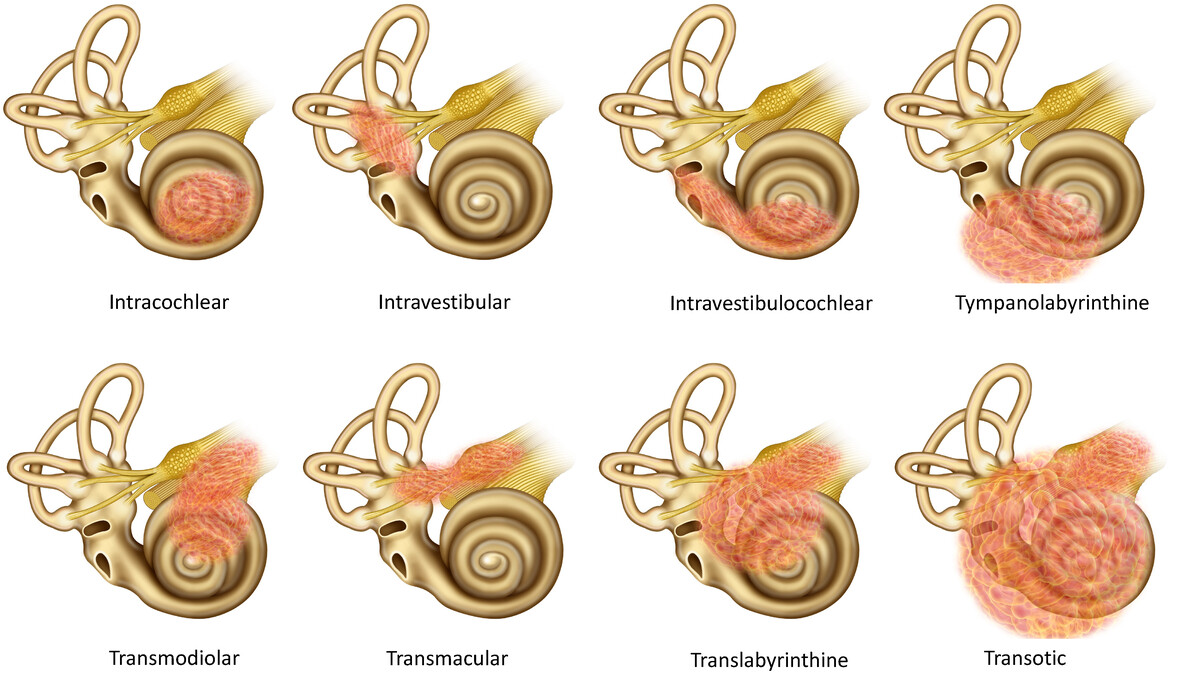
Intralabyrinthine schwannomas are rare tumors that originate from the inner ear and can cause significant hearing loss and dizziness. In this scoping review, we attempt to summarize hearing outcomes in patients with these tumors who have undergone cochlear implantation either after tumor resection or no resection.
Allergy, Rhinology, and Immunology
Original Report
Effect of Hormone Replacement Therapy on Chronic Rhinosinusitis Management
- Pages: 3921-3926
- First Published: 30 March 2024
Computer-Aided Diagnosis of Maxillary Sinus Anomalies: Validation and Clinical Correlation
- Pages: 3927-3934
- First Published: 23 March 2024
Application of a Novel 3D-Printed Nasal Plug as a Conservative Treatment for Empty Nose Syndrome
- Pages: 3935-3940
- First Published: 28 March 2024
Clinical Significance of HMGB1 and Autophagy-Related Genes in Sinonasal Inverted Papilloma
- Pages: 3941-3946
- First Published: 28 March 2024
Phase II Trial of the Impact 0.5% Povidone-Iodine Nasal Spray (Nasodine®) on Shedding of SARS-CoV-2
- Pages: 3947-3952
- First Published: 30 March 2024
Safety and Pharmacokinetics of a Ciprofloxacin and Azithromycin Stent for Chronic Rhinosinusitis
- Pages: 3953-3959
- First Published: 02 April 2024
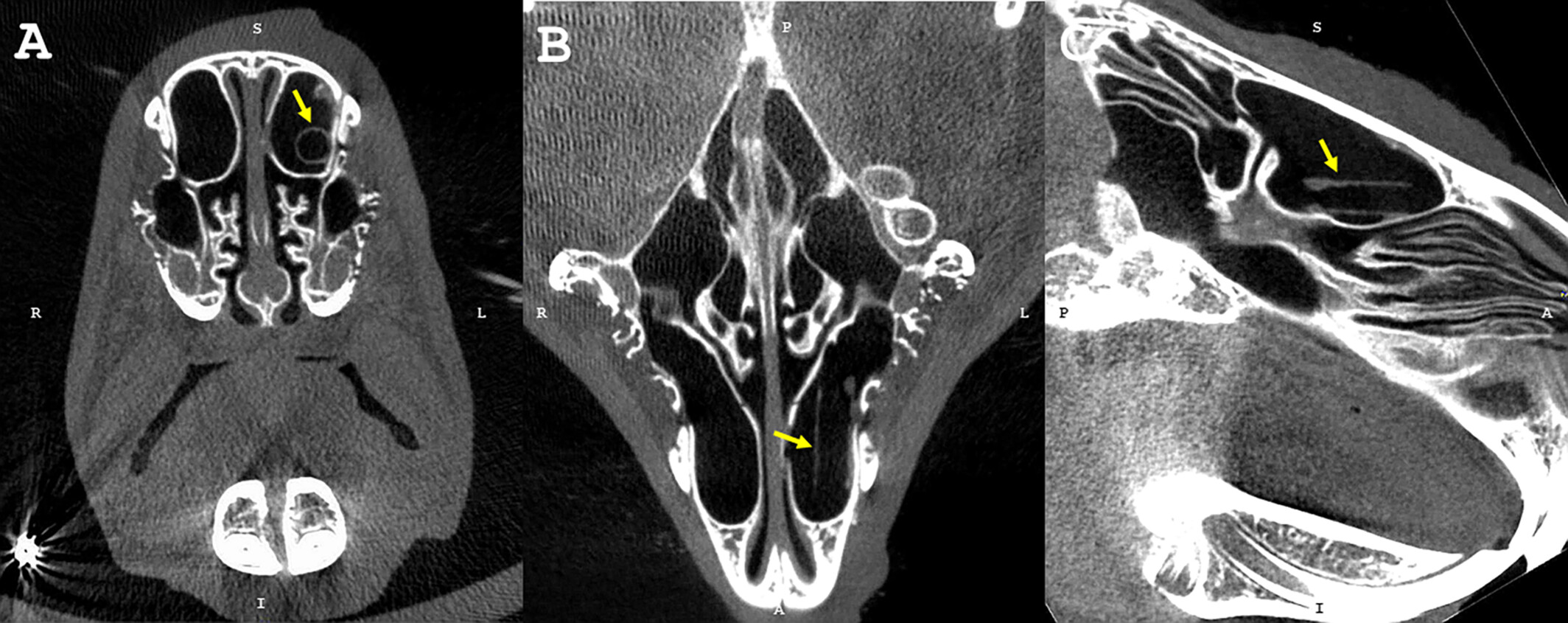
The high-dose ciprofloxacin–azithromycin stent provides sustained drug release within the rabbit maxillary sinus at levels that would provide efficacious treatment of recalcitrant infections without measurable toxicity. This sinus stent is highly translatable to human studies and could be a revolutionary new treatment for recalcitrant bacterial chronic rhinosinusitis.
Clinical Productivity and Patient Complexity of Academic Rhinologists: An Analysis of Medicare Metrics
- Pages: 3960-3964
- First Published: 10 April 2024
Predictors of Sinonasal Improvement After Highly Effective Modulator Therapy in Adults with Cystic Fibrosis
- Pages: 3965-3973
- First Published: 18 April 2024
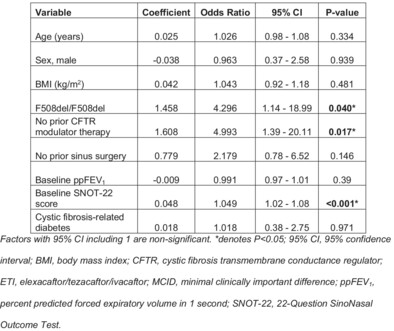
This investigation pooled data from four prospective studies of people with cystic fibrosis (PwCF) and chronic rhinosinusitis across 10 U.S. centers to determine the factors that predicted improvement in 22-question SinoNasal Outcome Test (SNOT-22) scores following highly effective modulator therapy (HEMT), and to corroborate the SNOT-22 minimal clinically important difference (MCID) in PwCF. Worse baseline sinonasal symptoms, F508del homozygosity, and absence of prior modulator therapy predicted greater SNOT-22 score improvement after HEMT initiation. The mean MCID for SNOT-22 in PwCF was calculated to be 8.5 points, similar to non-CF individuals with CRS pursuing sinus surgery.
Case Report
Lymphoplasmacytic Lymphoma/Waldenström Macroglobulinemia Diagnosed Following Recurrent Epistaxis
- Pages: 3974-3976
- First Published: 28 March 2024
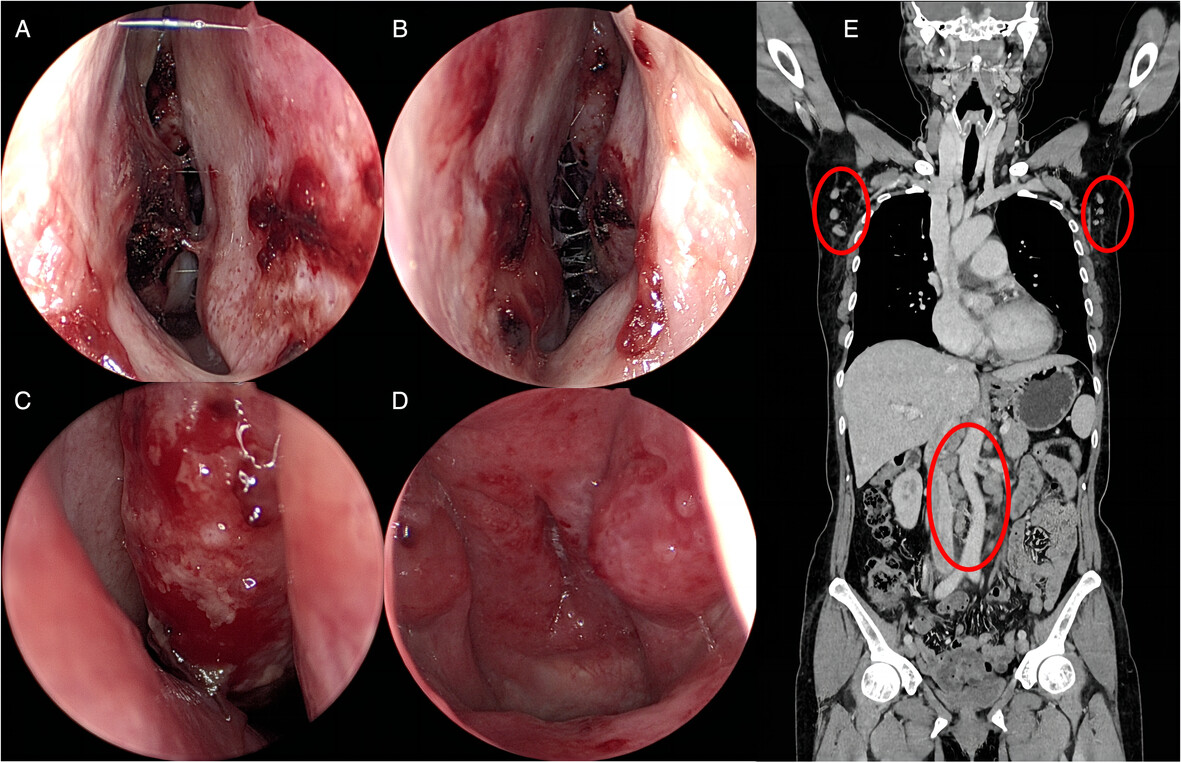
This report details the diagnosis of lymphoplasmacytic lymphoma/Waldenström macroglobulinemia (LPL/WM) in a 65-year-old female patient presenting with persistent bilateral epistaxis. Comprehensive diagnostic evaluations revealed this rare underlying condition, highlighting the importance of thorough investigation in cases of recurrent epistaxis unresponsive to standard treatments. The case emphasizes the necessity for clinicians to consider a broad differential diagnosis in such scenarios.
Bronchoesophagology
Case Report
Removal of Metal Tracheal Stent: A Difficult Foreign Body
- Pages: 3977-3980
- First Published: 26 March 2024
Original Report
Validity and Reliability of the Reflux Sign Assessment-10 (RSA-10)
- Pages: 3981-3988
- First Published: 29 March 2024
Comprehensive Otolaryngology
Original Report
Elective Surgery Trends and Outcomes of Nonagenarians and Centenarians in Otolaryngology–Head and Neck Surgery: A NSQIP Study
- Pages: 3989-3996
- First Published: 08 April 2024
The Comparative Diagnostic Capability of Large Language Models in Otolaryngology
- Pages: 3997-4002
- First Published: 02 April 2024
Patient Factors Associated with Missed Otolaryngology Appointments at an Urban Safety-Net Hospital
- Pages: 4003-4010
- First Published: 11 April 2024
Does ChatGPT Answer Otolaryngology Questions Accurately?
- Pages: 4011-4015
- First Published: 28 March 2024
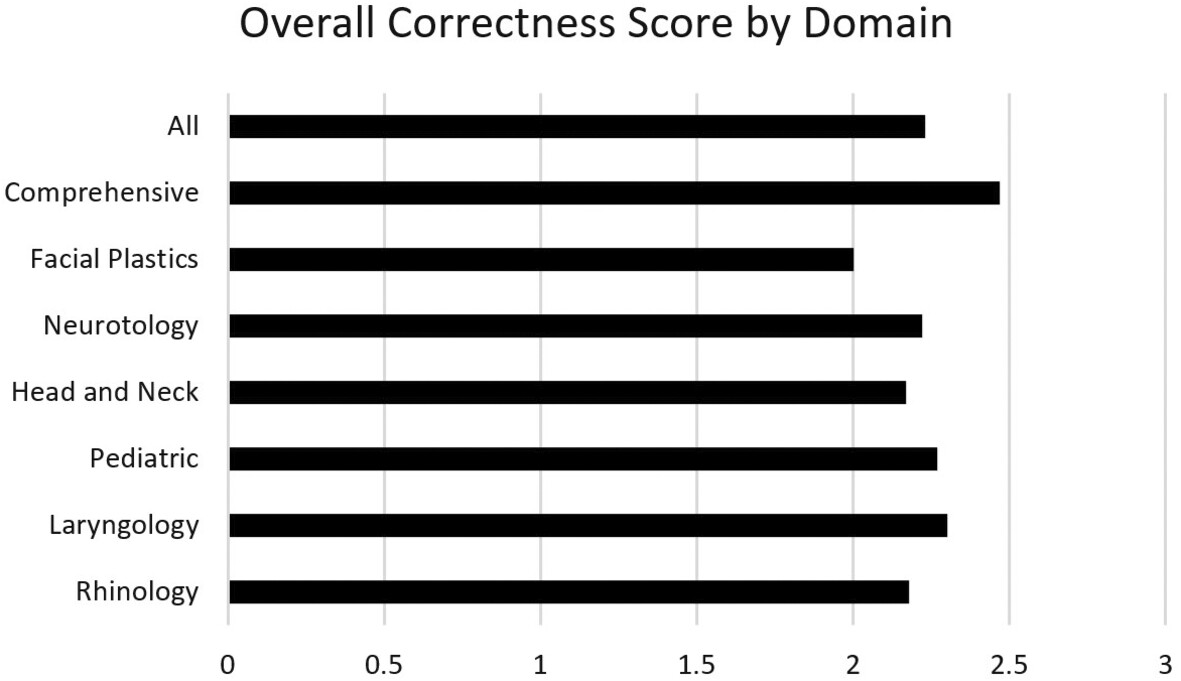
Artificial intelligence software has become incredibly popular, but this study showed that it answered otolaryngology questions correctly 45% of the time, and only 37% of the time for questions based on clinical practice guidelines. Practitioners and patients should exercise caution when asking medical information from software such as ChatGPT, especially since sources are not cited for the information it presents.
Machine Learning for Predictive Analysis of Otolaryngology Residency Letters of Recommendation
- Pages: 4016-4022
- First Published: 11 April 2024
Cranial Base
Case Report
Granulomatous Inflammation of the Skull Base: A Rare Case of Mycobacterium tuberculosis in the United States
- Pages: 4023-4027
- First Published: 16 May 2024
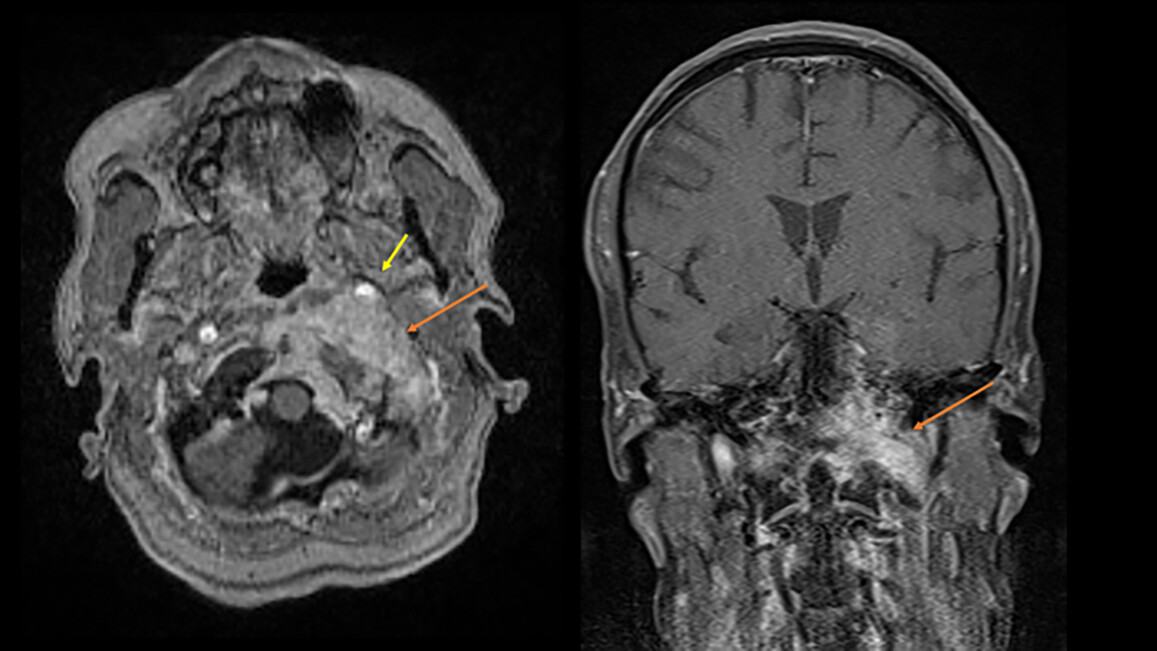
The differential for an ill-defined, bone-destructive, granulomatous lesion of the skull base includes malignancy, as well as autoimmune and infectious processes. Suspicion for tuberculosis of the skull base in high-risk patients is particularly necessary given the difficulty to culture on standard cultures, need for specific and prolonged antibiotic therapy, and dire morbidity if not diagnosed and treated in a timely manner. Repeat biopsies and cultures were necessary to diagnose this case of Mycobacterium tuberculosis of the skull base after initial biopsy was non-diagnostic.
Facial Plastic-Reconstructive Surgery
Original Report
Changes in Perceived Emotions in Facial Paralysis Patients After Depressor Anguli Oris Excision
- Pages: 4028-4035
- First Published: 06 May 2024
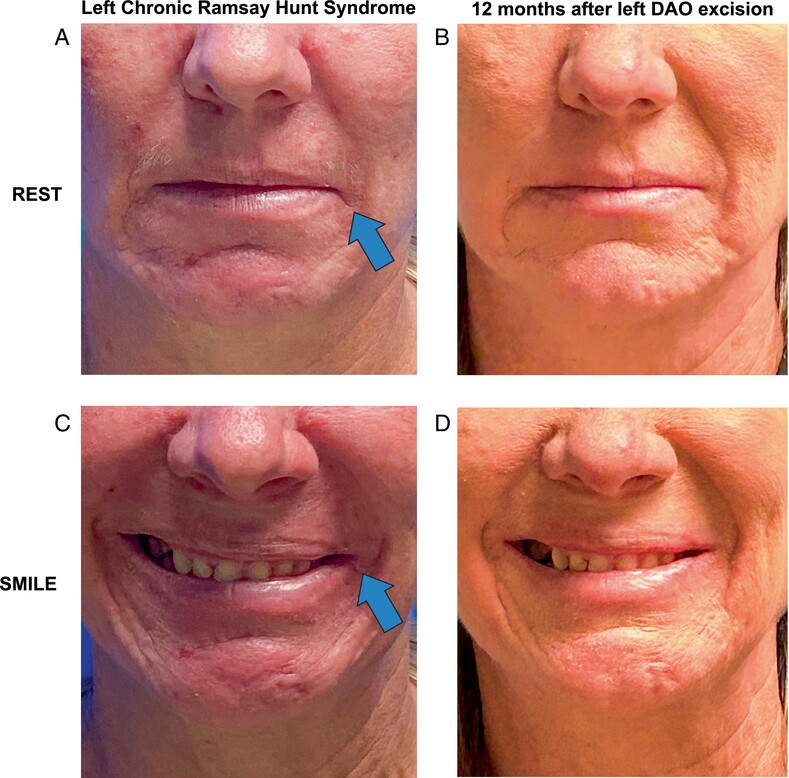
This research confirms depressor anguli oris excision improves patient-reported, clinician-graded, and objective smile outcomes in patients with nonflaccid facial paralysis in the largest case series to date. We demonstrate for the first time that depressor anguli oris excision increases happiness conveyed by patients with nonflaccid facial paralysis while smiling and at rest.
Octyl-2-cyanoacrylate Tissue Adhesive Closure Versus Subcuticular Suture for Post-Auricular Incisions
- Pages: 4036-4041
- First Published: 10 May 2024
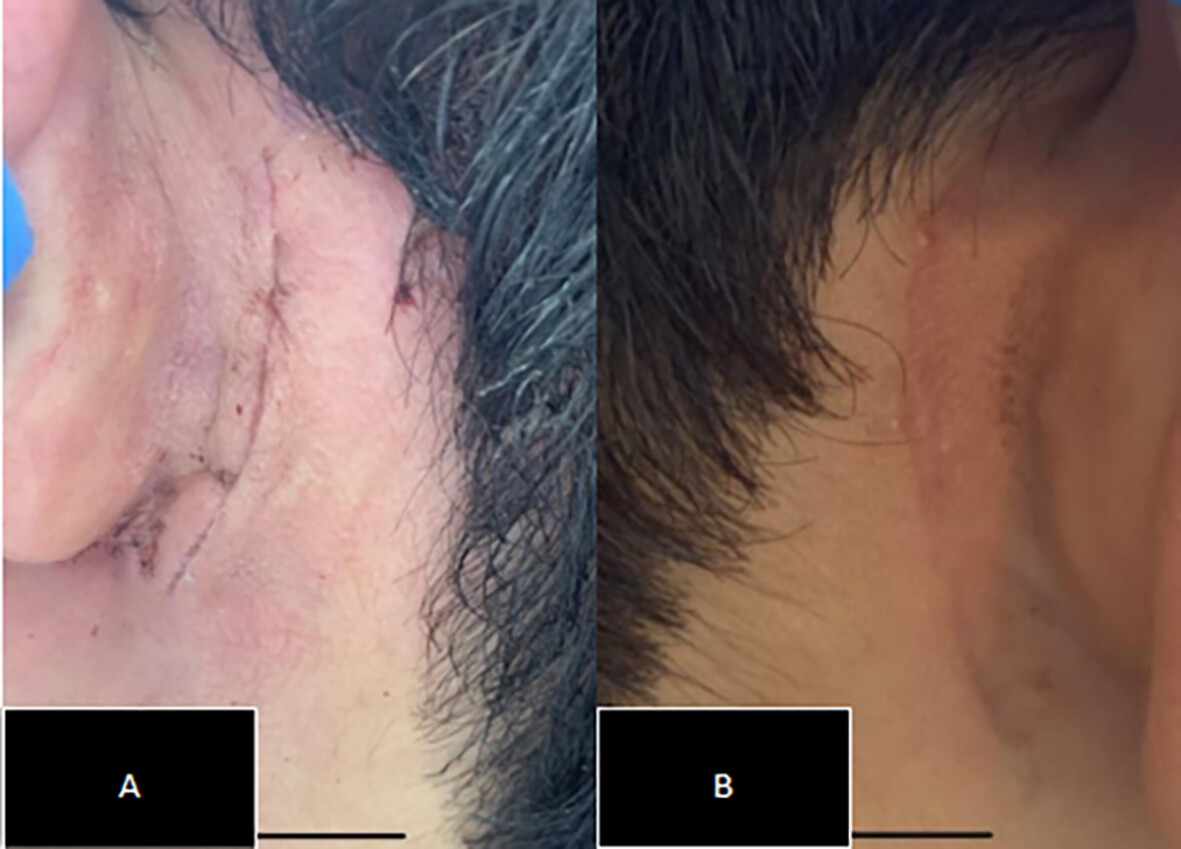
This prospective, randomized, controlled, single-blind study was conducted at Ohud Hospital from May 2021 to May 2022. Ear surgery and cochlear implantation in patients were examined, and each ear was randomly assigned to receive layered closure or subcuticular sutures. Incisions were assessed at various time points, including 3 weeks, 6 weeks, 6 months, and 1 year post-surgery. The patient and observer Scar Assessment Scale was used, and two independent ear surgeons used the Stony Brook Scar Evaluation Scale for initial scar assessment.
Head and Neck
How I Do It
In-office Transoral Hilar Sialolithotomy: A Cost-Effective and Patient-Centered Procedure
- Pages: 4042-4044
- First Published: 26 March 2024
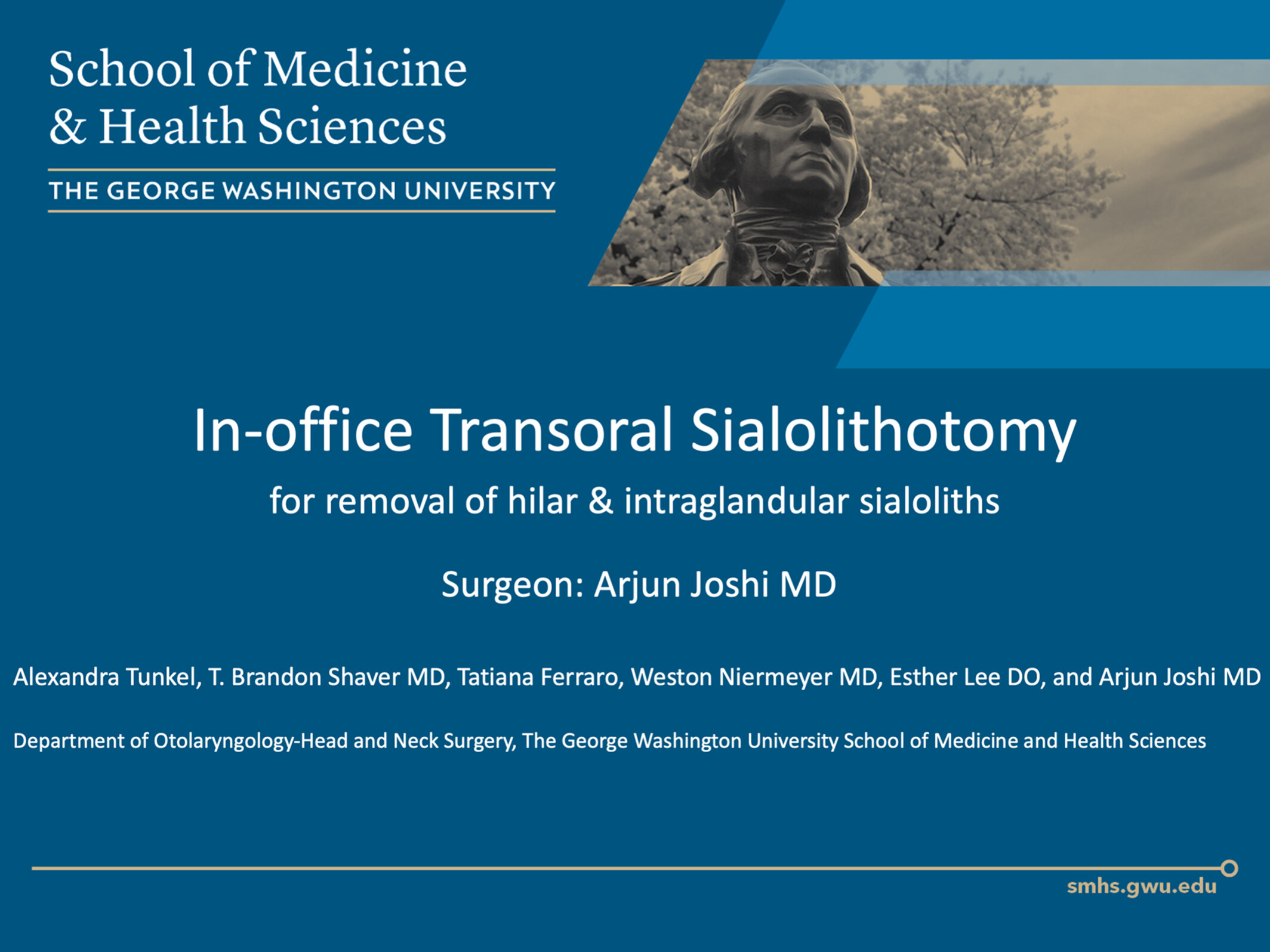
Transoral sialolithotomy performed in-office under local anesthesia is routinely performed for distal submandibular stones. We demonstrate the senior author's novel practice of in-office transoral sialolithotomy for hilar and intraglandular stones. A review of cases performed by the senior author revealed similar rates of complication and stone recurrence as those reported in the literature from removal under general anesthesia. Laryngoscope, 134:4042–4044, 2024
Original Report
Robotic Neck Dissection in Head and Neck Cancer via Modified BABA Technique
- Pages: 4045-4051
- First Published: 27 April 2024
E-Only Article
Letter to the Editor
In Reference to Treatment Outcome in Head and Neck Cancer with Distant Metastasis at Initial Diagnosis
- Page: E29
- First Published: 27 May 2024
In Response to Treatment Outcome in Head and Neck Cancer with Distant Metastasis at Initial Diagnosis
- Page: E30
- First Published: 17 May 2024
Laryngology
Original Report
Proteomic Analysis of Surgery-induced Stress Post-Tracheal Transplantation Highlights Changes in Matrisome
- Pages: 4052-4059
- First Published: 14 May 2024
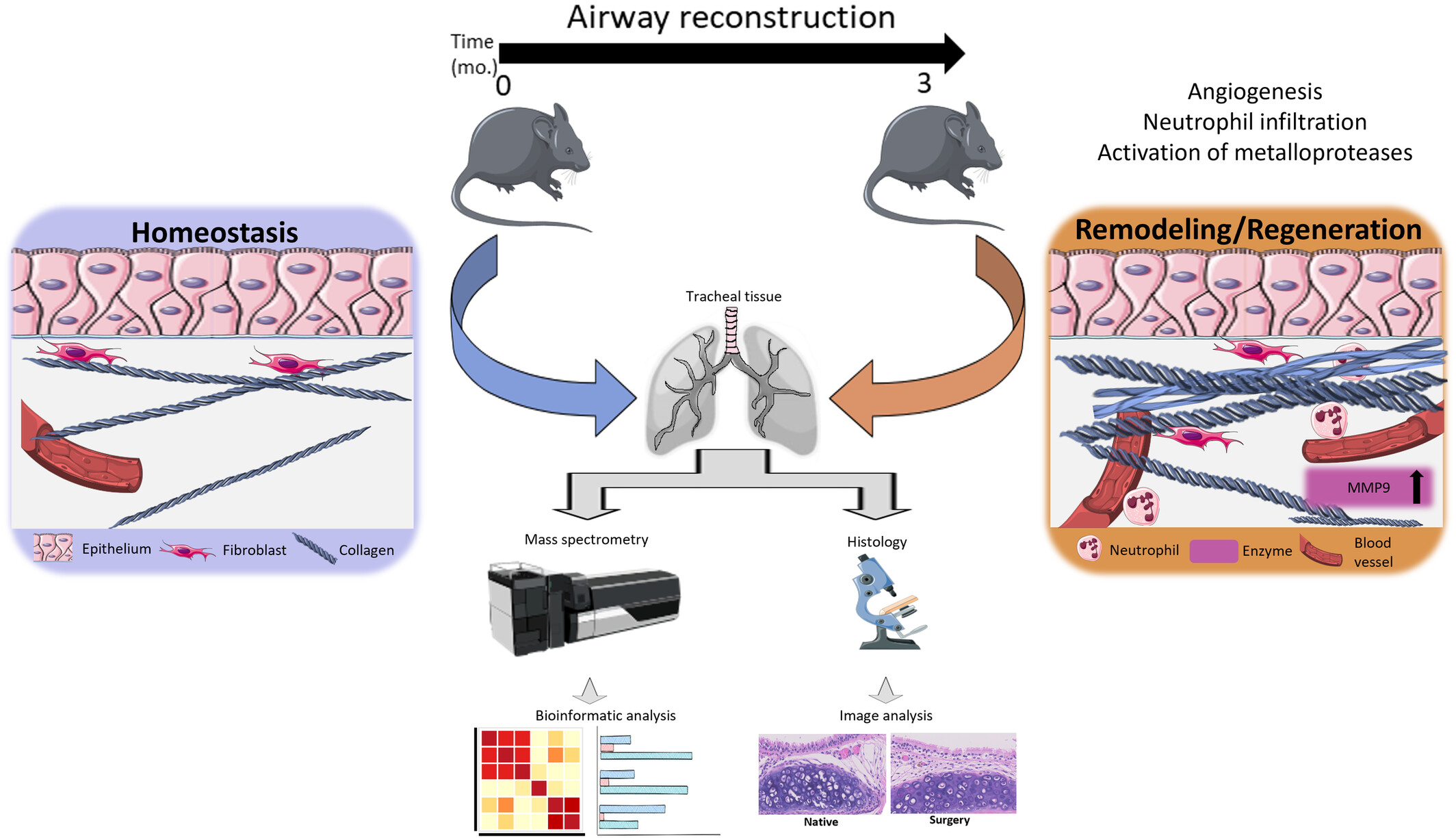
This study explores the impact of Surgery-induced stress (SIS) on the normal airway repair post-airway reconstruction, utilizing a mouse microsurgery model, proteomics, and computational methods. Findings revealed a significant increase in submucosal cellular infiltration and alterations in the matrisome composition at three months' post-transplantation. The identification of a unique proteomic signature, including 217 "Surgery-evoked proteins," suggests intricate connections between neutrophils, extracellular matrix remodeling, and angiogenesis, highlighting the potential role of MMP9 in the immune response and repair after airway reconstruction.
Voice Disorders and Hearing Loss May Be Additive Risk Factors for Depression in a National Cohort
- Pages: 4060-4065
- First Published: 28 May 2024
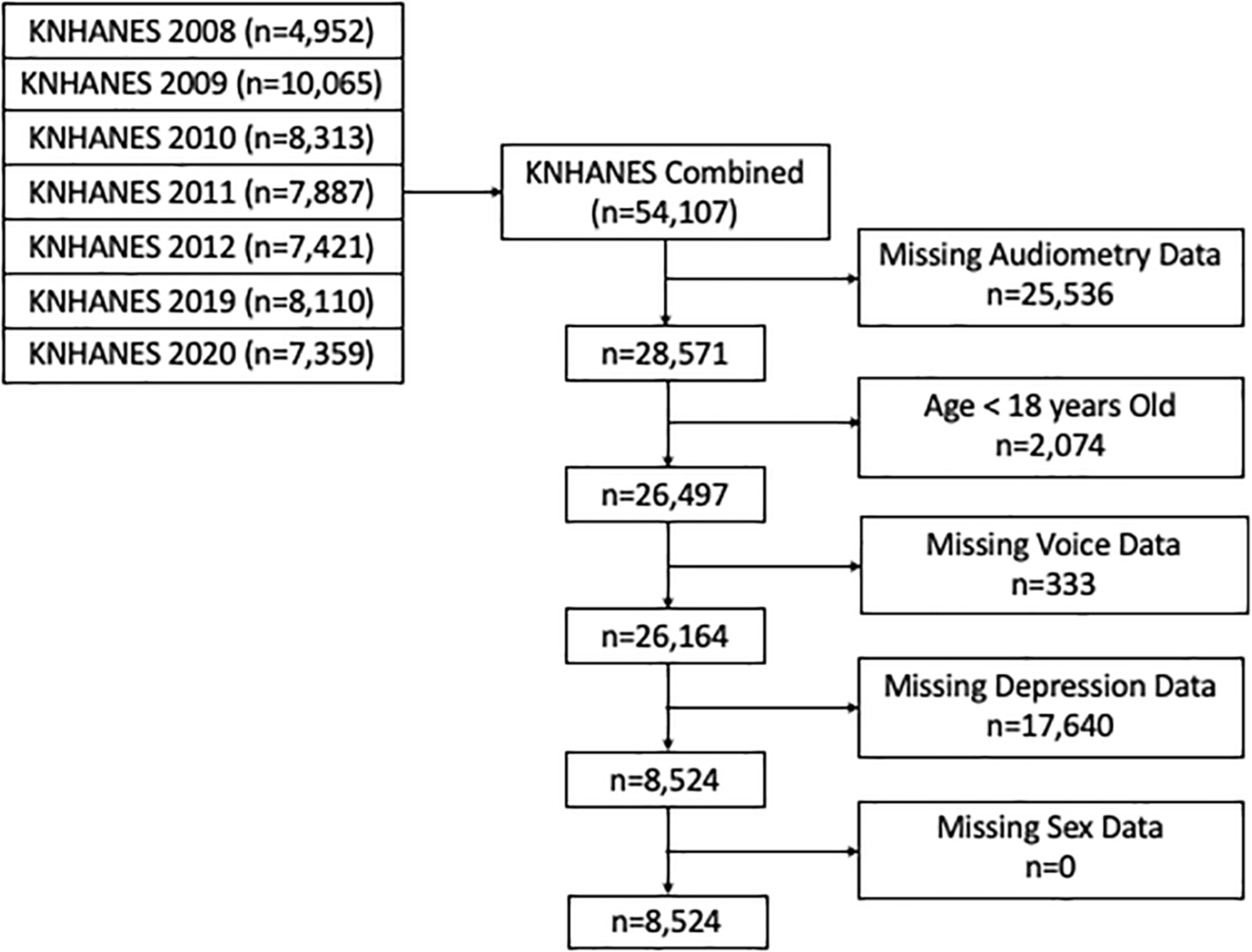
This cross-sectional study using national Korean National Health and Nutrition Examination Survey (KNHANES) data supports independent associations between hearing loss (HL) and depression, as well as self-reported voice disorder and depression. Those with a combination of HL and self-reported voice disorder had nearly double the odds of depression compared to those with neither condition. Future research should highlight using both objective and subjective metrics for the exposures of HL and voice disorder.
Objective Comparison of White Light and Narrow-Band Imaging for Detecting Scars, Sulci and Nodules
- Pages: 4066-4070
- First Published: 10 May 2024
Esophageal Baseline Impedance is Associated with Laryngopharyngeal Reflux and Treatment Response
- Pages: 4071-4077
- First Published: 22 May 2024
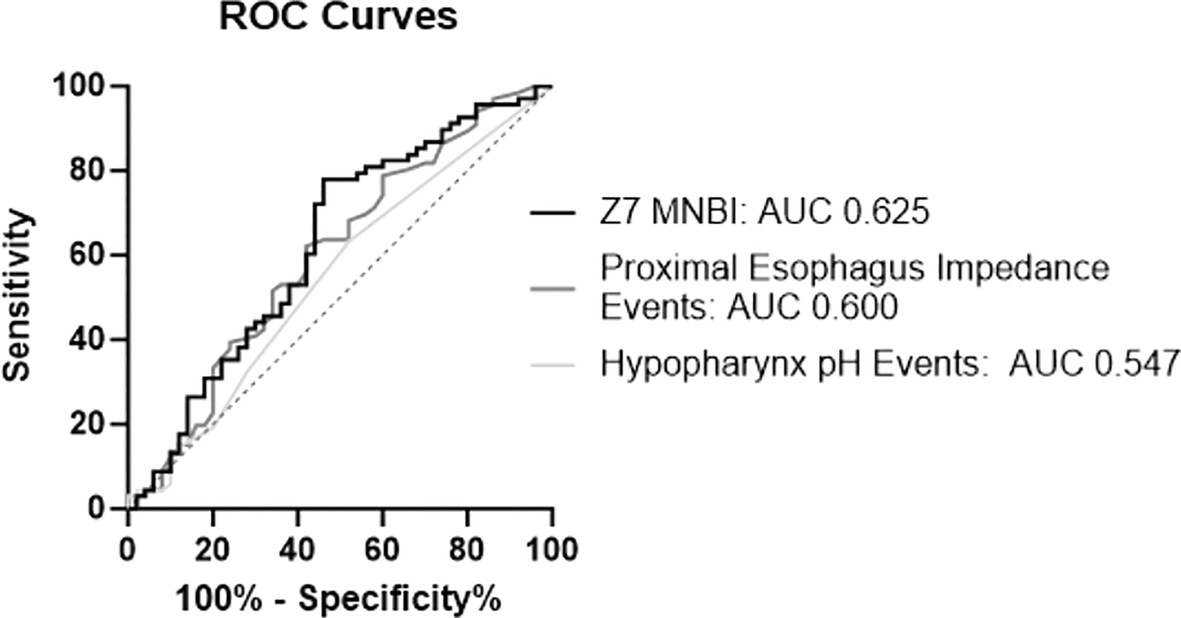
Mean nocturnal baseline impedance (MNBI) is a value calculated on multichannel intraluminal impedance-pH studies and provides a functional measure of the esophageal epithelial barrier. MNBI has been shown to help with the diagnosis, characterization, and management of patients with gastroesophageal reflux disease. We analyzed its utility in patients with laryngopharyngeal reflux (LPR) symptoms and found it to be predictive of LPR and responsiveness to antireflux treatment.
POSTN Regulates Fibroblast Proliferation and Migration in Laryngotracheal Stenosis Through the TGF-β/RHOA Pathway
- Pages: 4078-4087
- First Published: 21 May 2024
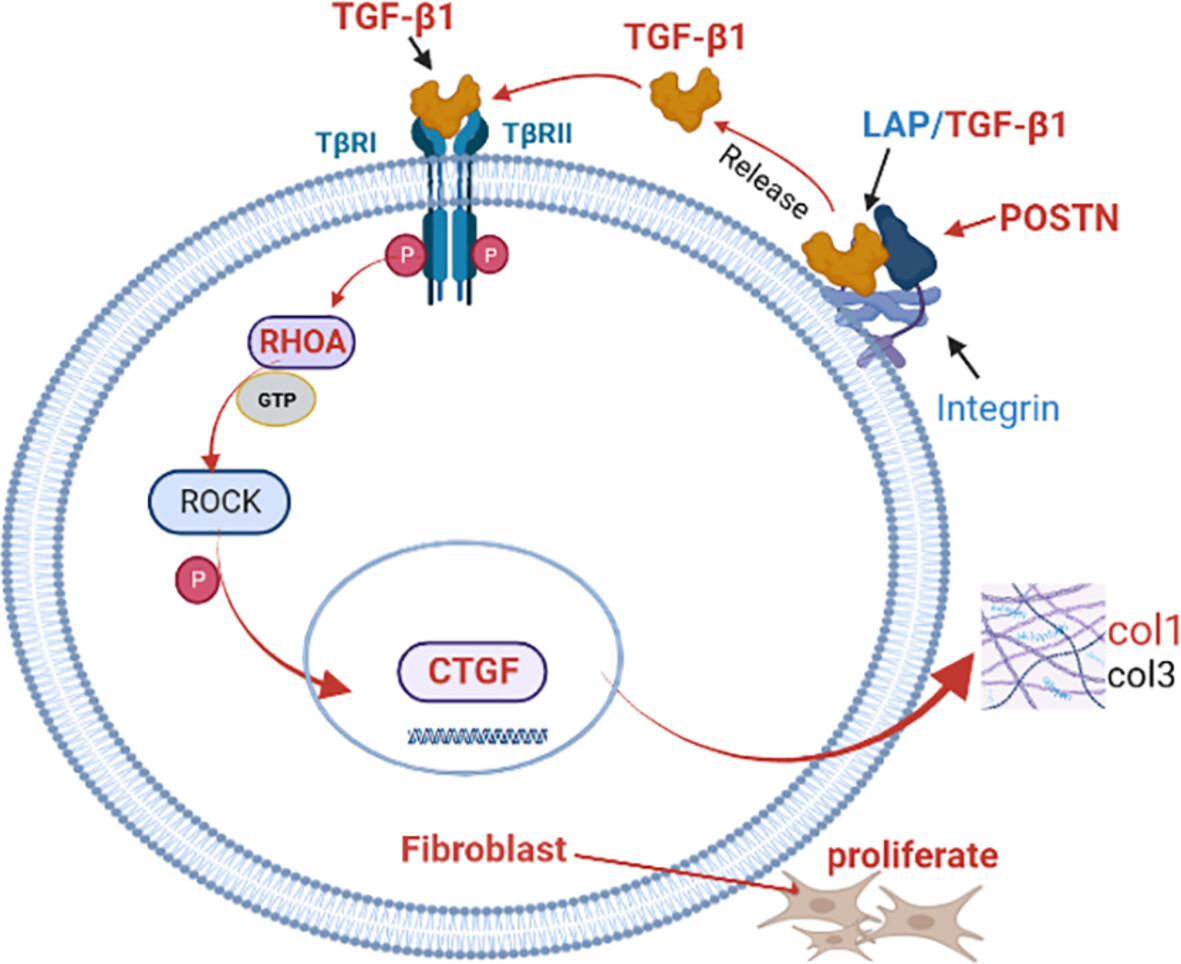
This study confirmed that POSTN can promote the proliferation and migration of tracheal fibroblasts and cause the formation of laryngotracheal scars. This effect is related to the activation of the TGFβ1/RHOA pathway. POSTN and the TGFβ1/RHOA pathway may key factors in the pathogenesis of Laryngotracheal stenosis.
Investigation of the Position and Angle of the Vocal Fold Projected onto the Thyroid Cartilage
- Pages: 4088-4094
- First Published: 28 May 2024
Otology-Neurotology
Original Report
Diagnostic Yield of Patients Undergoing Evaluation of Possible Superior Canal Dehiscence
- Pages: 4095-4100
- First Published: 30 April 2024
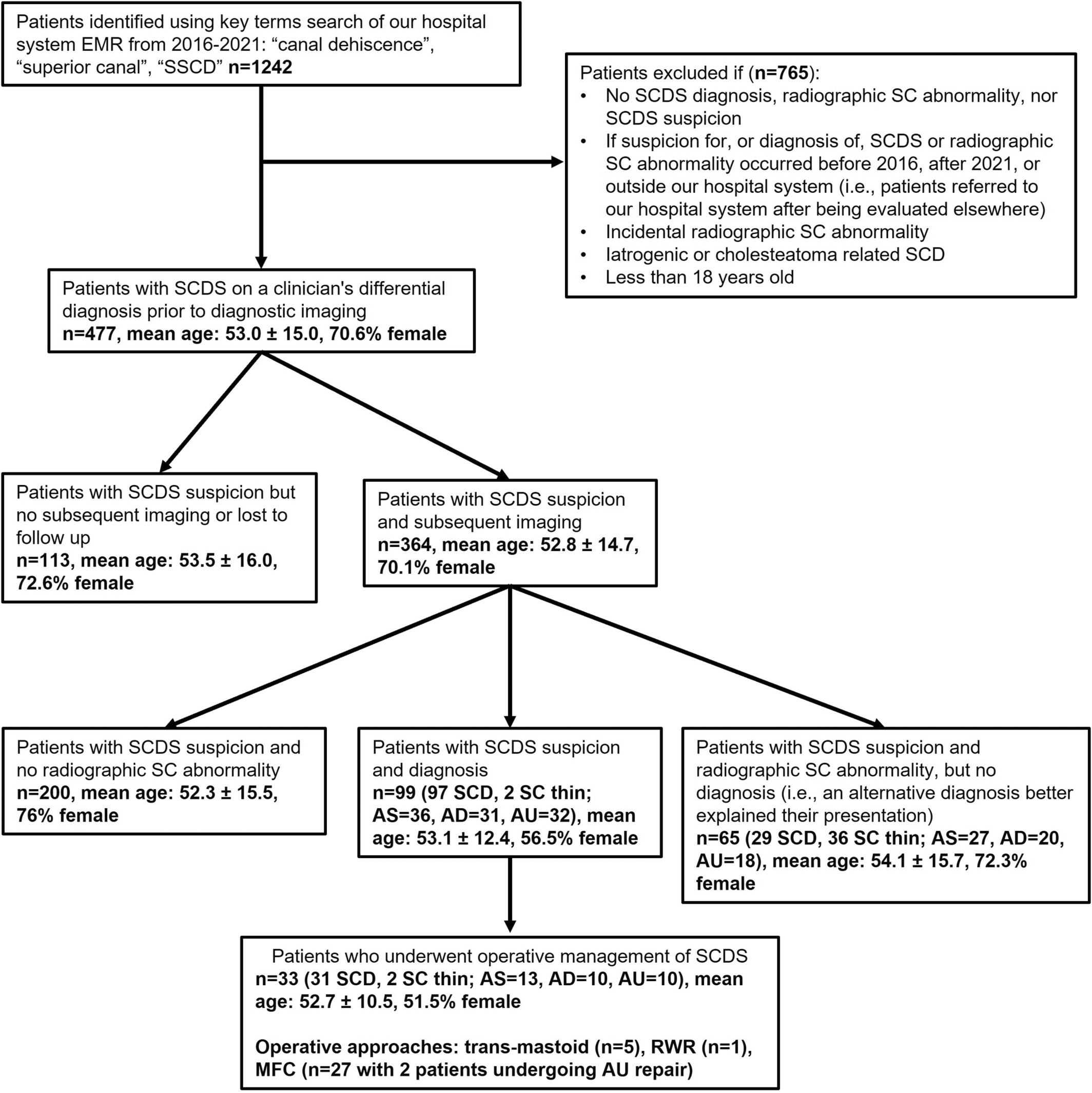
In this retrospective cohort study of 477 patients undergoing evaluation for superior canal dehiscence syndrome (SCDS), the diagnostic incidence, or yield, of newly identified radiographic superior semicircular canal abnormalities and SCDS was 45.1% and 27.2%, respectively. Patients not diagnosed with SCDS alternatively received 21 unique diagnoses and 52.1% (138/265) were not definitively diagnosed with any condition.
Demographic Representation in Clinical Research Relative to a Cochlear Implant Patient Population
- Pages: 4101-4110
- First Published: 24 April 2024
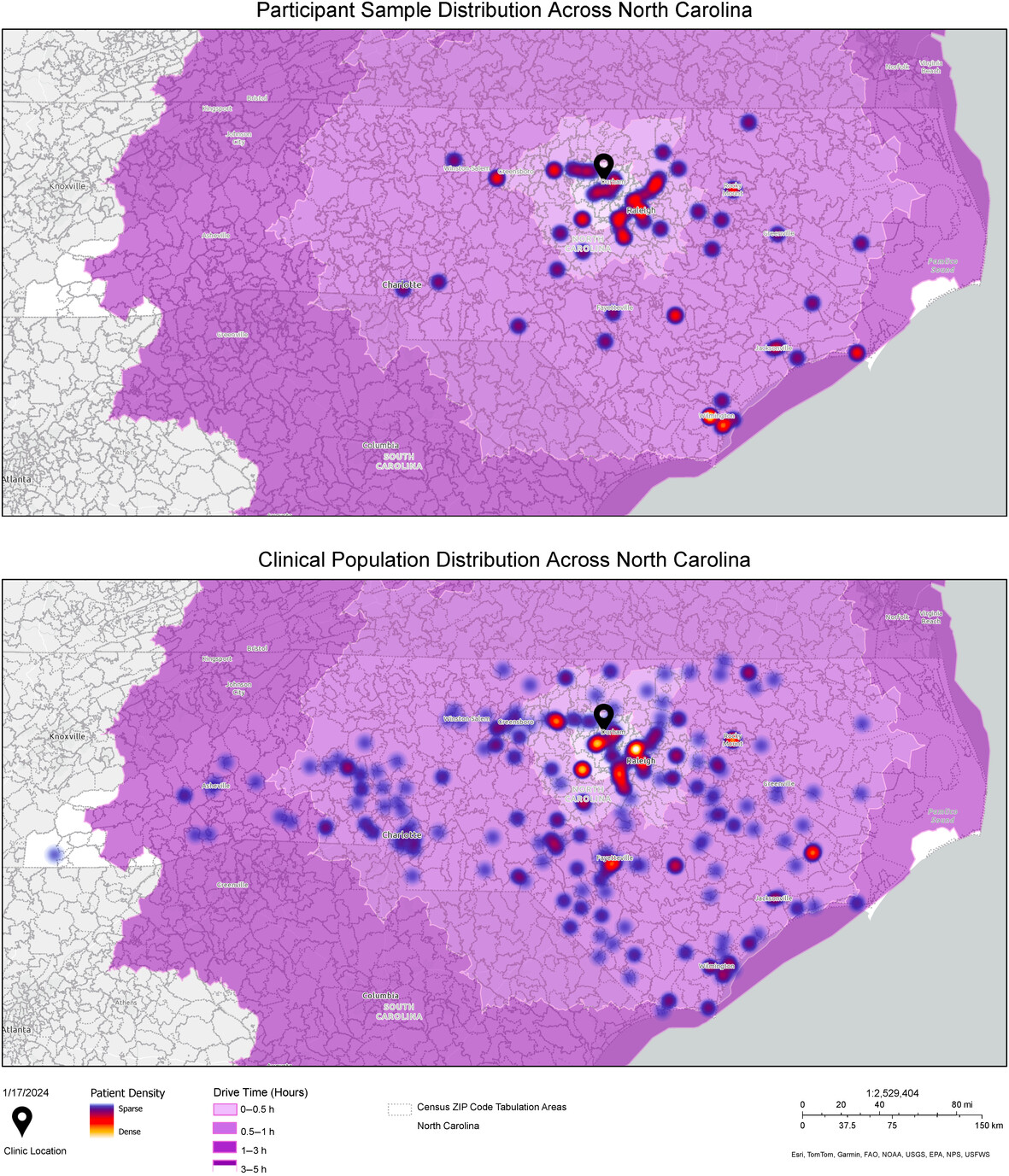
Research participant samples that are representative of the patient population are needed to ensure appropriate interpretation and application of research findings for all patients. We evaluated the efficacy of a specific study design and recruitment strategy in obtaining a participant sample that was representative of the cochlear implant patient population at our center. There were no significant differences between groups for biological sex, age at implantation, racial distribution, socioeconomic position, degree of urbanization, or drive time to the center, indicating the study design and recruitment strategy supported a sample that was representative of our patient population.
Case Report
The Petrosquamosal Sinus: A Rare Vascular Variant Encountered During Cochlear Implantation Surgery
- Pages: 4111-4113
- First Published: 16 April 2024
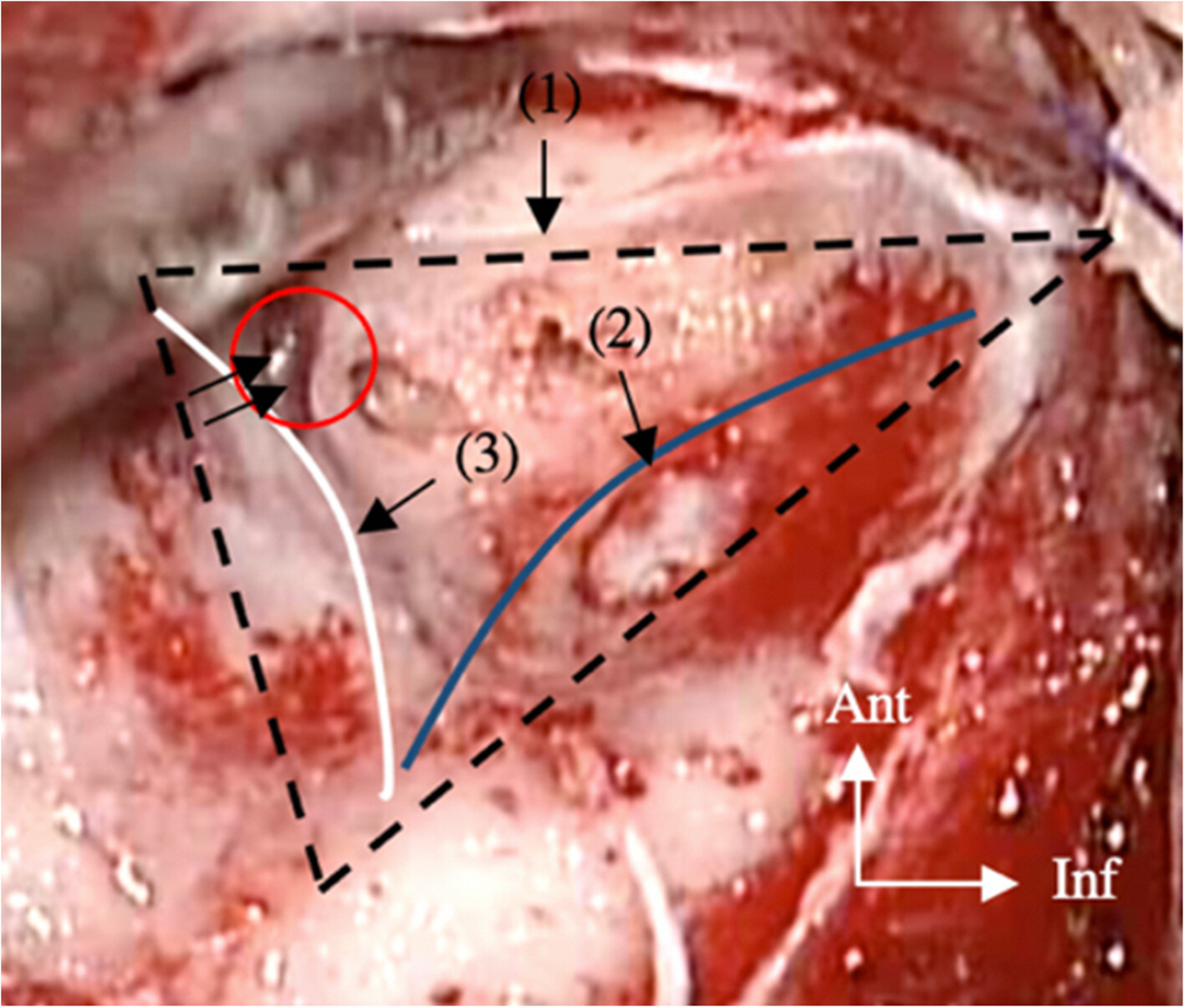
The petrosquamosal sinus (PSS) is a rare and almost unknown emissary vein of the temporal bone. It traverses the middle cranial fossa along the petrosquamosal fissure and connects dural sinuses with extracranial venous networks. It is known to undergo normal involution during fetal and early postnatal life, and therefore is rarely found in humans. When encountered during surgery, it can be a significant source of bleeding hindering proper visualization of important surgical landmarks. Here we report the case of a PSS, encountered in a child during cochlear implantation surgery. We discuss its clinical significance and impact on the surgical approach.
Pediatrics
How I Do It
Suspension Microesophagoscopy for Endoscopic Suture Closure of Pediatric Tracheoesophageal Fistula
- Pages: 4114-4117
- First Published: 13 April 2024

A 15-year-old male with previous open tracheoesophageal fistula (TEF) repair presented with a large, short recurrent TEF. The TEF was denuded with cautery on the tracheal side and the patient was intubated with a cuffed endotracheal tube. Suspension microesophagoscopy allowed excellent exposure of the TEF from the esophageal side, which was cauterized. Four sutures were placed endoscopically from the esophageal side, and the TEF remained closed 6 months postoperatively. Laryngoscope, 134:4114–4117, 2024
Case Report
Large Nasopharyngeal Hairy Polyp Causing Immediate Respiratory Distress at Birth
- Pages: 4118-4121
- First Published: 30 March 2024
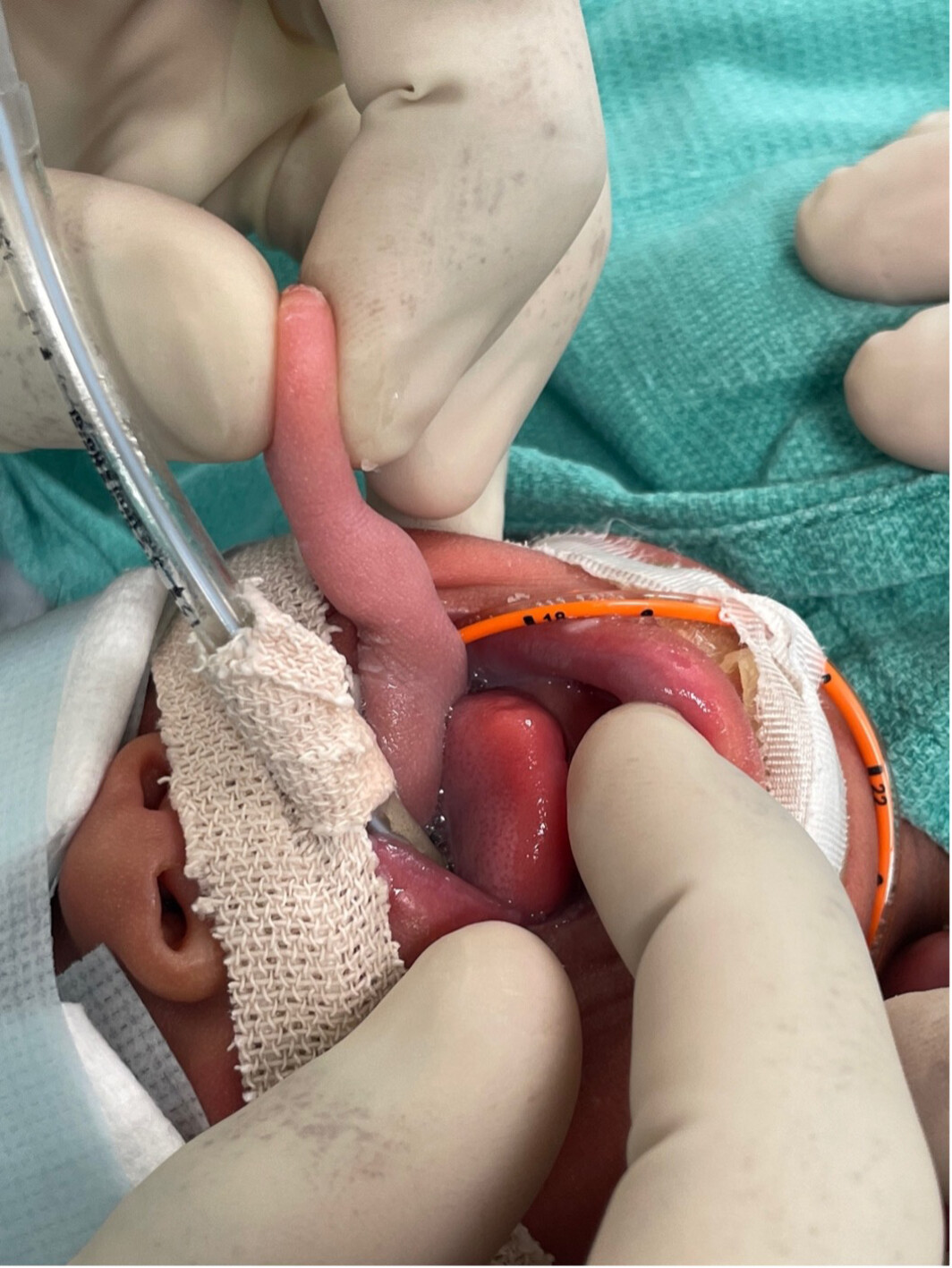
This article presents a rare case of a large hairy polyp, a developmental malformation causing a benign tumor, within the nasopharynx. The patient, born with the polyp obstructing the airway, required immediate intubation and a combined transnasal-transoral surgical approach for excision. The case underscores the challenges in diagnosing and managing such polyps, emphasizing the importance of imaging for surgical planning, and the consideration of multiple approaches to ensure complete resection and prevent recurrence.
Salvage of Infected Alloplastic Ear Reconstructions via Negative Pressure Wound Therapy
- Pages: 4122-4125
- First Published: 20 March 2024
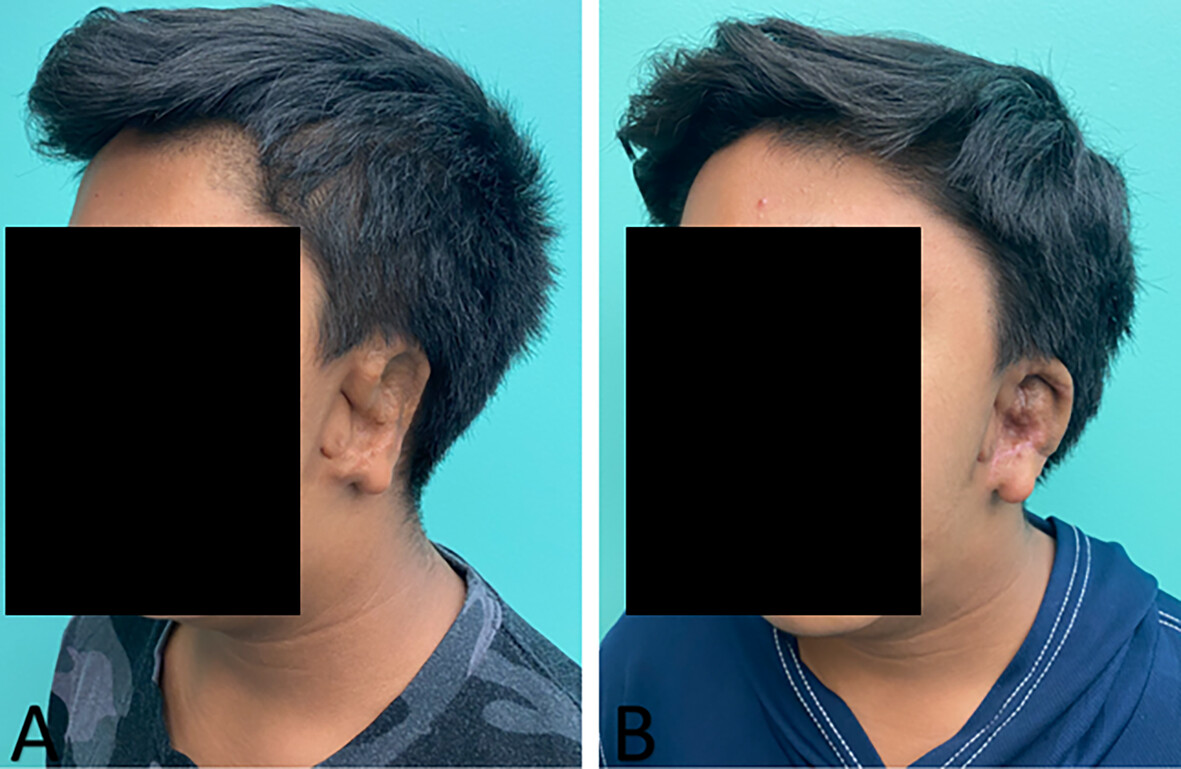
This is the first description of Negative Pressure Wound Therapy (NPWT) use in rescuing alloplastic ear reconstructions. Previously considered a sign of certain impending failure, severe infections with frank purulence can be salvaged. As a more recently developed technique, porous polyethylene (PPE) ear reconstruction provides benefits when compared to rib techniques. Increasing surgeon awareness of complication management may lead to further adoption of the technique and improve reconstructive results.
Original Report
Evaluation of Balance with Computerized Dynamic Posturography in Children with Otitis Media
- Pages: 4126-4133
- First Published: 10 April 2024
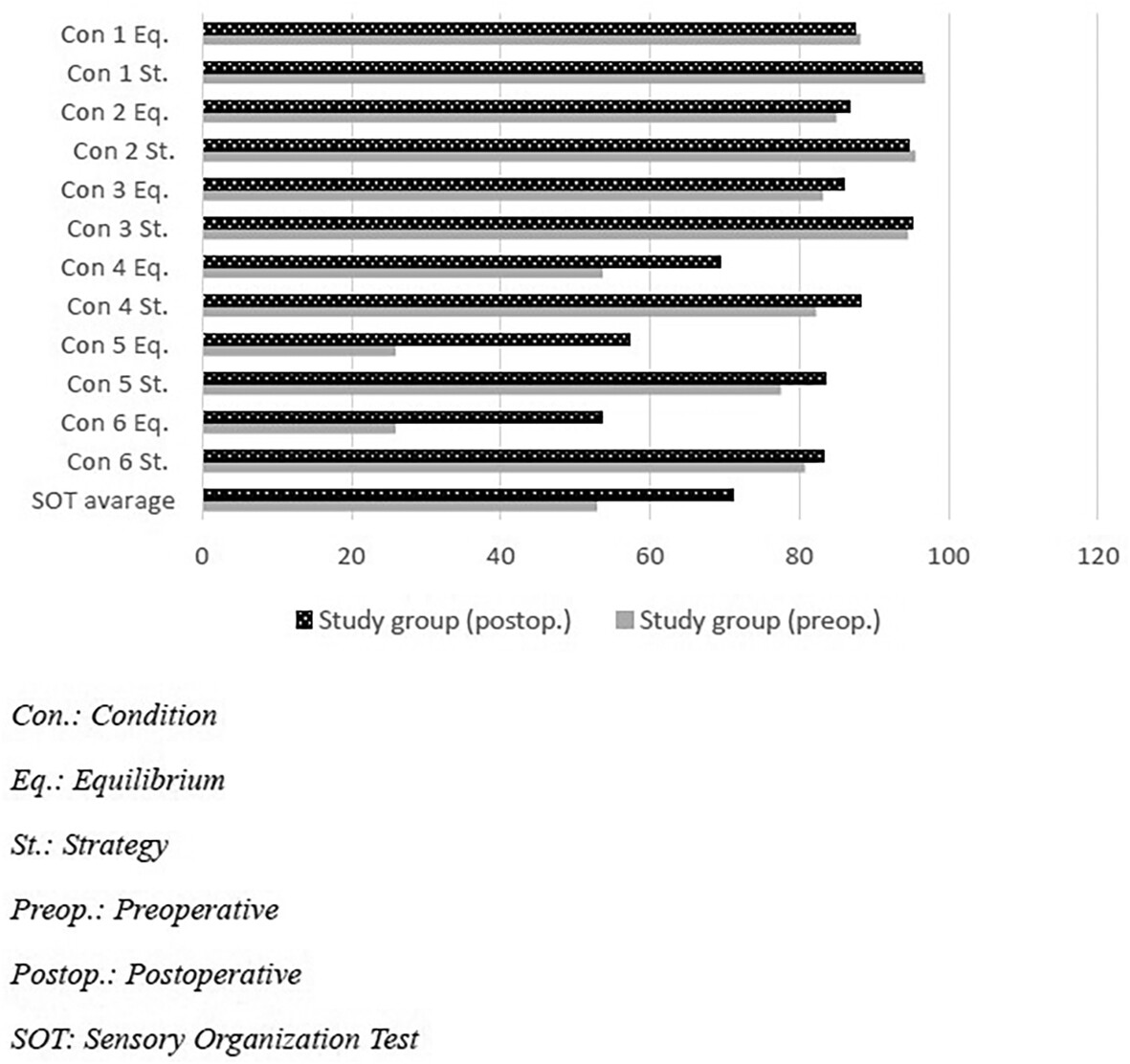
This is the precious study to evaluate the relationship between OME and balance disorders and the effects of ventilation tube insertion on balance using Computerized Dynamic Posturography. Furthermore, this study is the first to examine the relationship between a static clinical test and Computerized Dynamic Posturography.
Flexible and Rigid Bronchoscopy for Critically Ill Children on Extracorporeal Membrane Oxygenation
- Pages: 4134-4140
- First Published: 23 April 2024
Sleep Medicine
Original Report
Perioperative Delta Weight and Pediatric Obstructive Sleep Apnea Resolution after Adenotonsillectomy
- Pages: 4141-4147
- First Published: 29 March 2024
Pediatric Postoperative Outcomes for Severe and Very Severe Obstructive Sleep Apnea Syndrome
- Pages: 4148-4155
- First Published: 06 April 2024
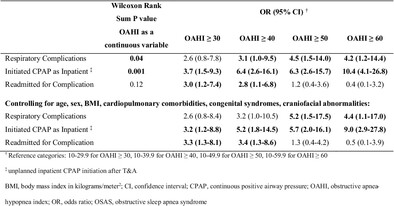
Postoperative outcomes in very severe obstructive sleep apnea syndrome is not well studied in pediatric patients. In a retrospective analysis, we show that very severe OSAS (OAHI >40) as determined by preoperative polysomnography parameters, including OAHI, oxygen saturation nadir, and hypercarbia is associated with an increased risk of respiratory complications following adenotonsillectomy or tonsillectomy. However, there does not appear to be a linear association with increasing severity of OAHI on regression analysis or an increase in postoperative complications overall.
Thyroid, Parathyroid, and Endocrine
Original Report
Thyroid Cancer Incidence Among Korean Individuals: A Comparison of South Korea and the United States
- Pages: 4156-4160
- First Published: 10 May 2024
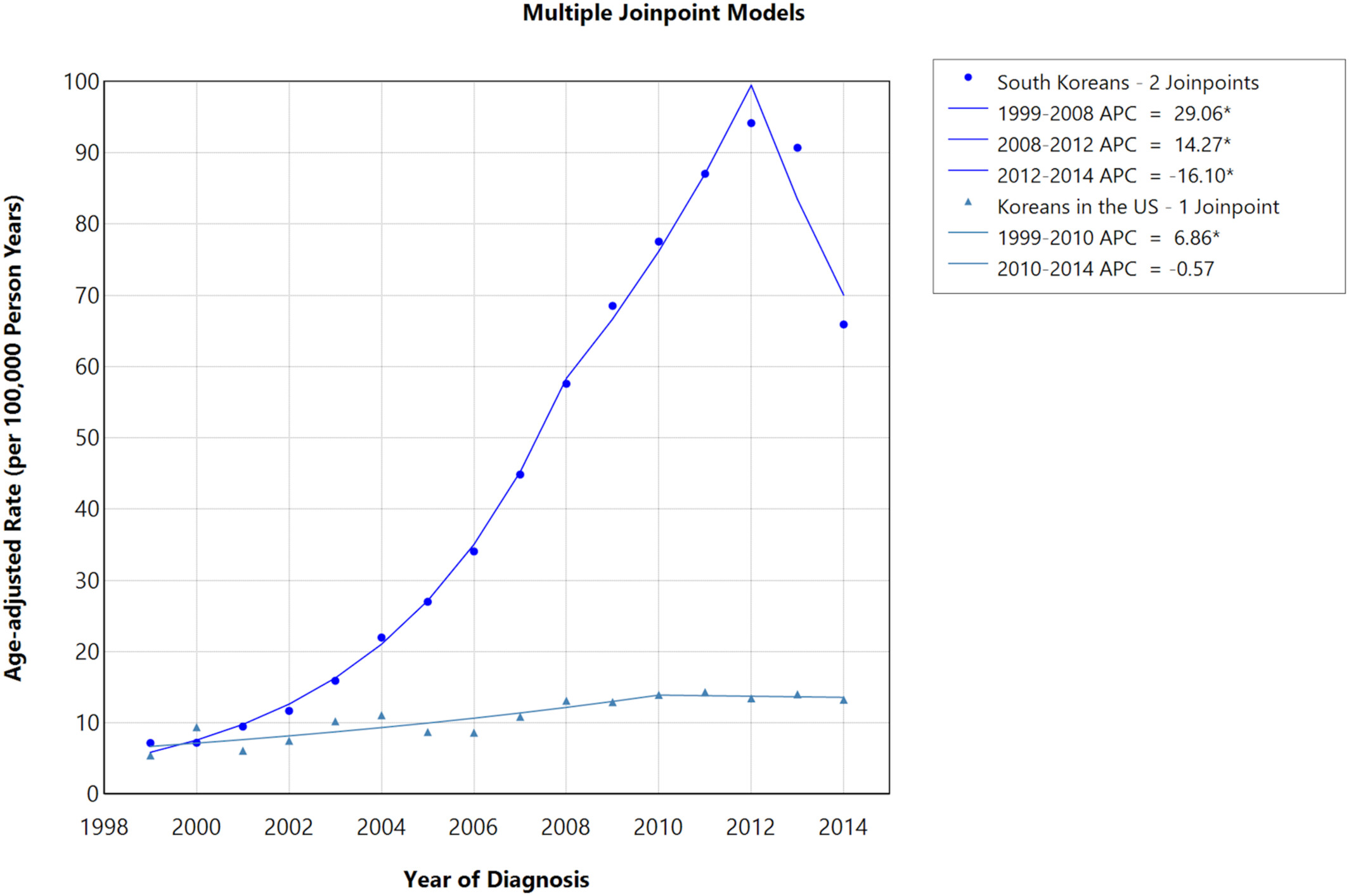
We compared thyroid cancer incidence rates and trends between Korean, non-Korean Asian, and non-Hispanic White populations in the United States, and between the US Korean population and the South Korean population. Thyroid cancer incidence rate for 1999–2014 was significantly higher for South Korea than for the US Korean population, which was slightly higher than the non-Korean Asian population, and slightly lower than the non-Hispanic White population.
Case Report
The Effects of Nebulized Lidocaine on the Laryngeal Adductor Reflex
- Pages: 4161-4164
- First Published: 26 March 2024
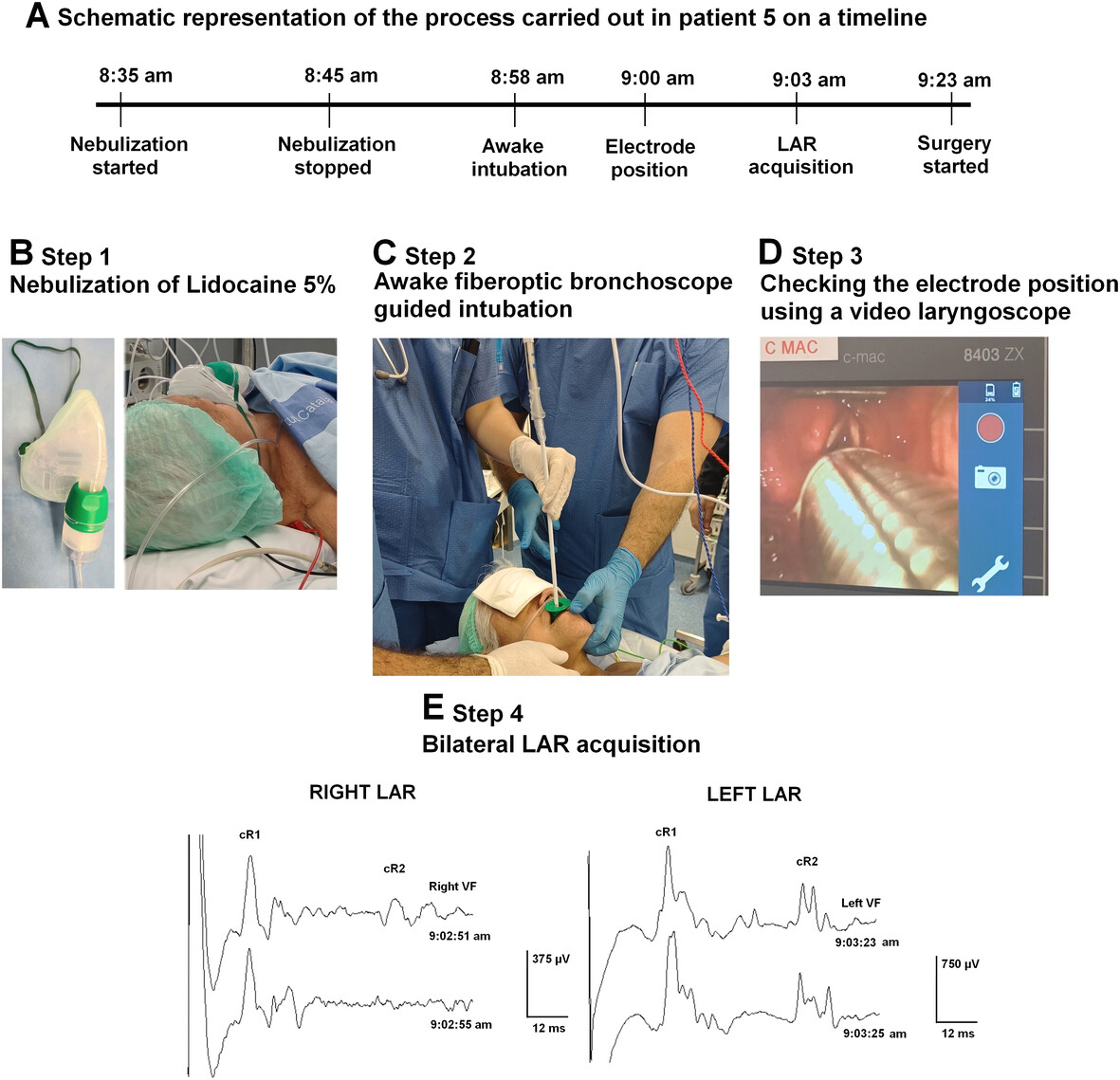
The laryngeal adductor reflex (LAR) is a brainstem reflex that closes the vocal fold and constitutes a new method for continuously monitoring the vagus and laryngeal nerves during different surgeries. Previous reports concluded that topical lidocaine in spray inhibited LAR responses. However, topical anesthesia in the upper airway may be necessary in awake intubation. We present six patients who underwent neck endocrine surgery due to an intrathoracic goiter that compromised the airway. Before awake intubation, a nebulization of lidocaine 5% was applied for at least 10 min. The intubation procedure was well tolerated, and bilateral LAR with suitable amplitudes for monitoring was obtained in all cases. In our series, the nebulization of lidocaine 5% did not affect the laryngeal adductor reflex.




